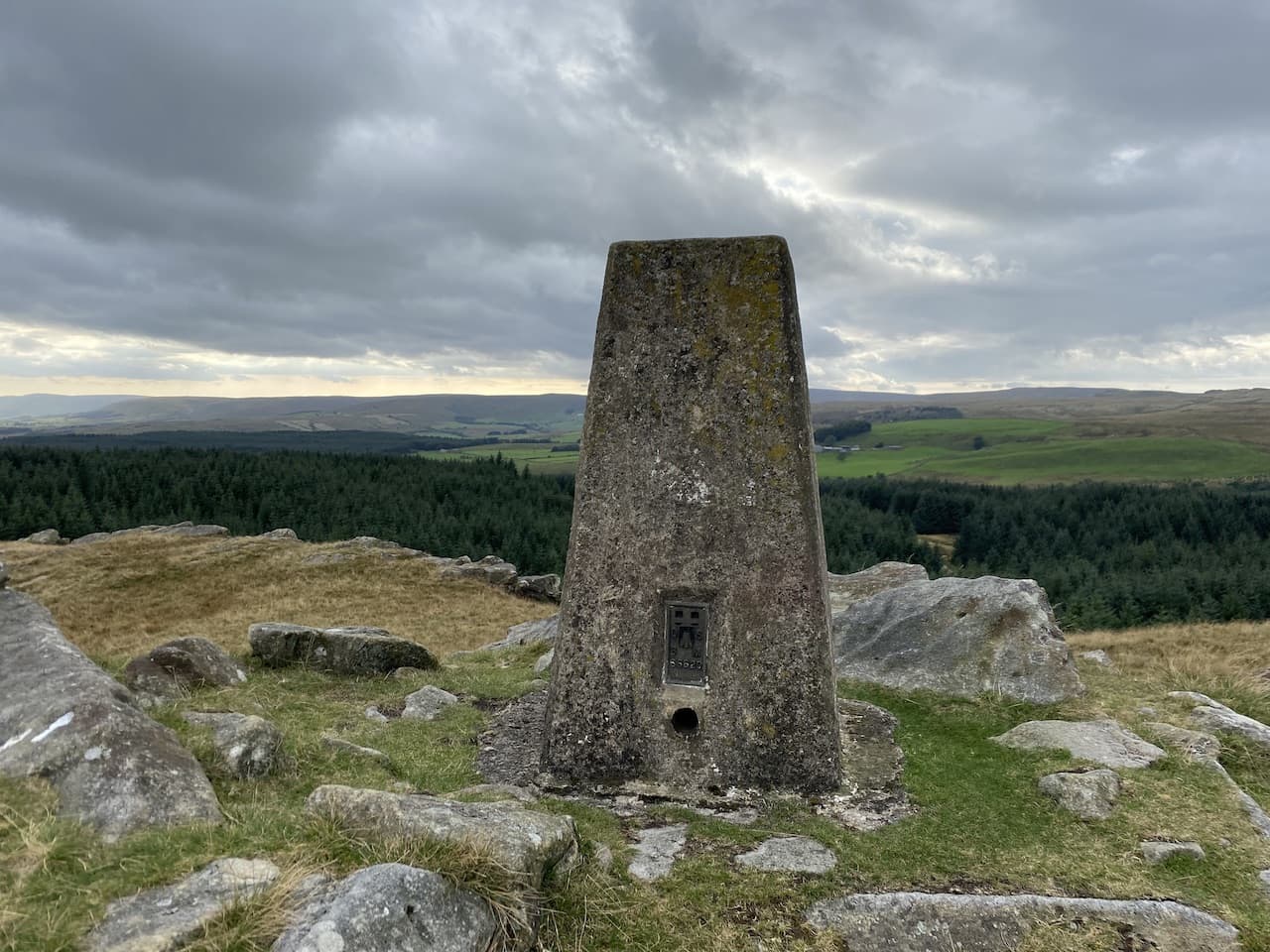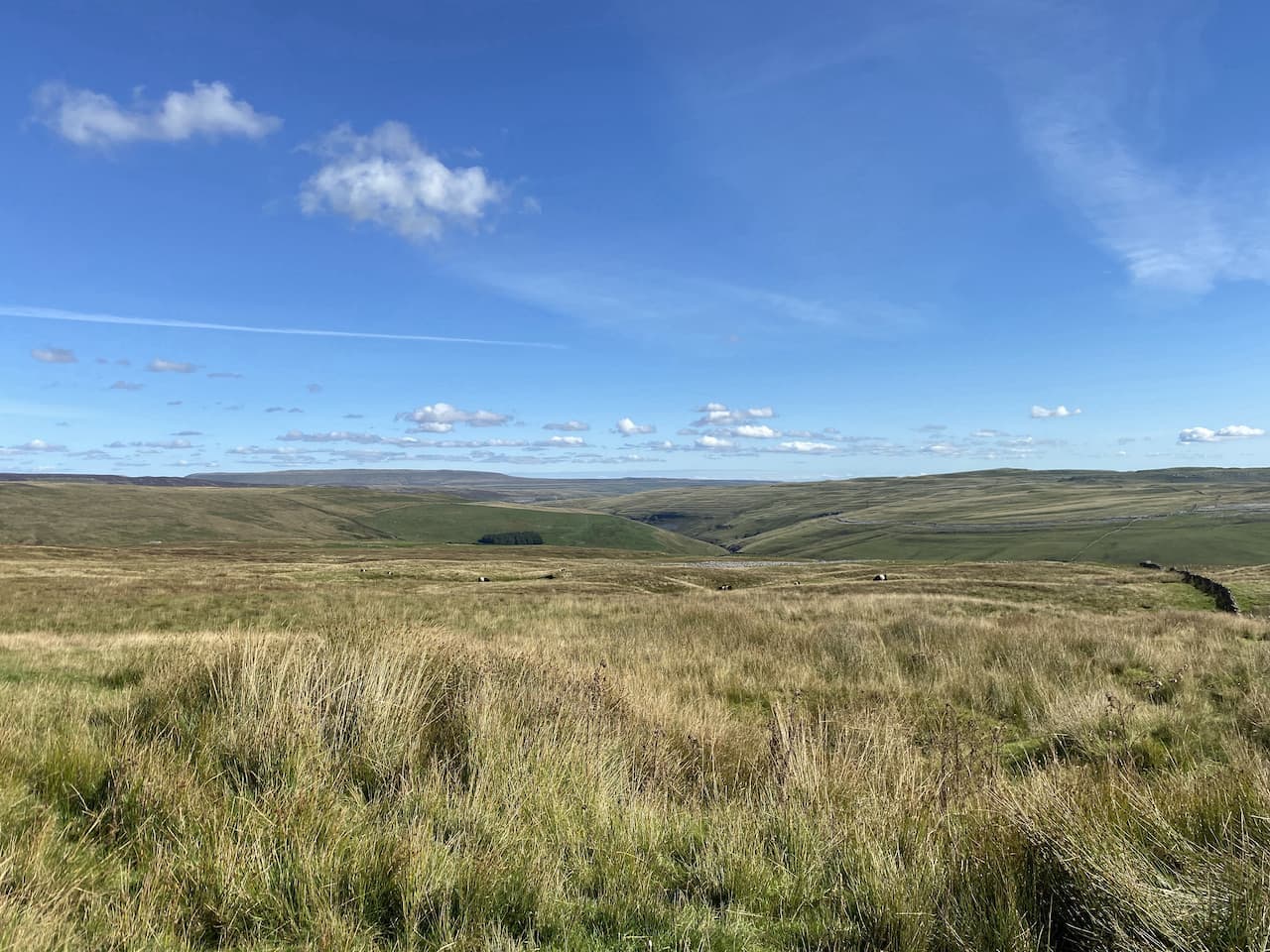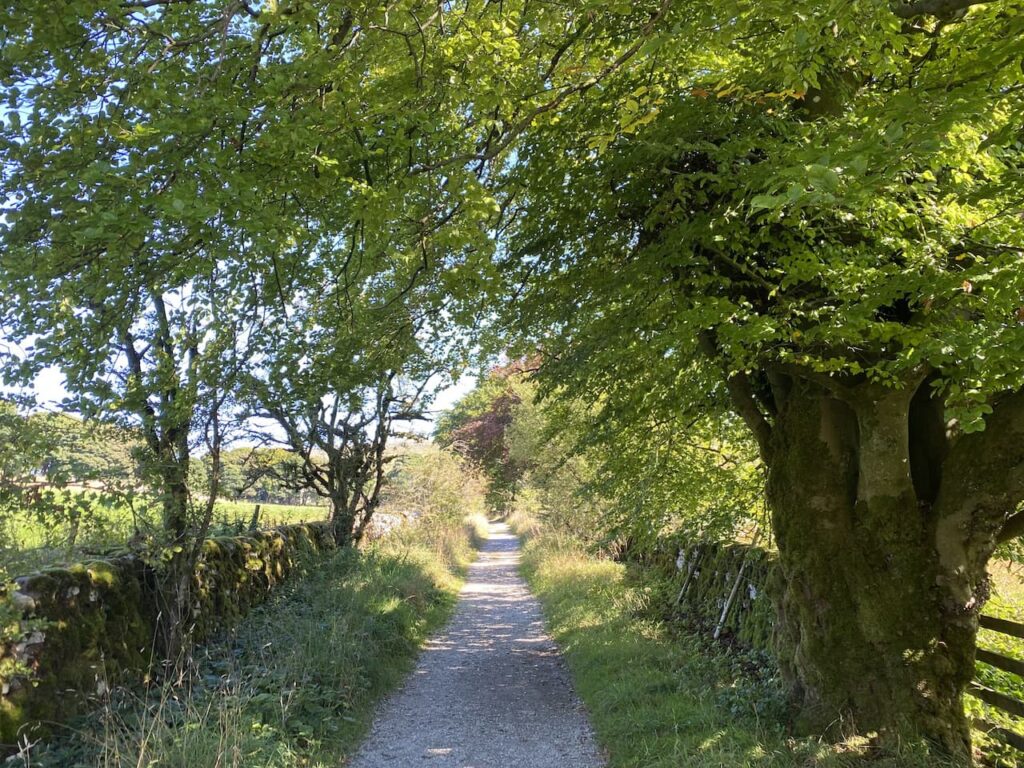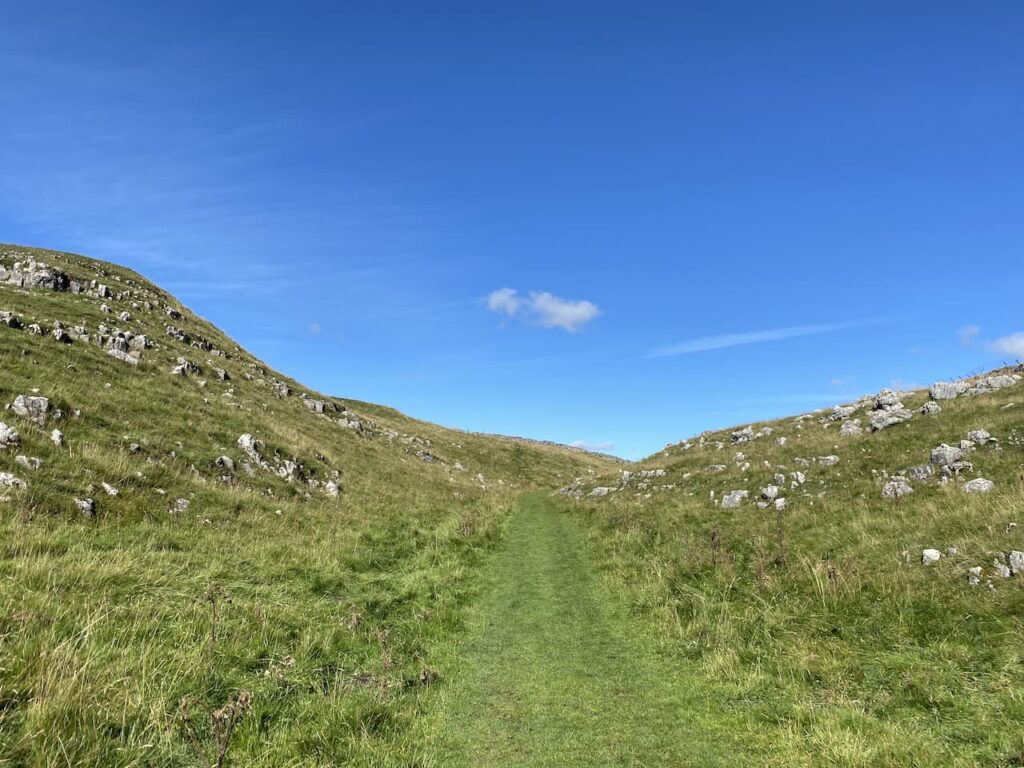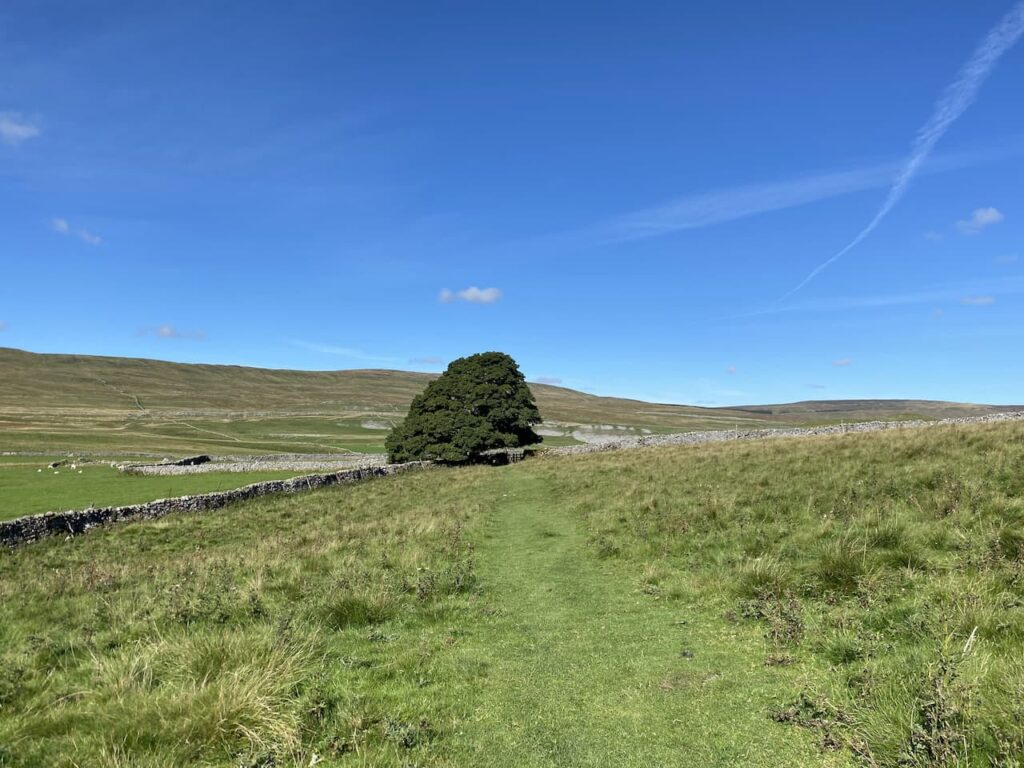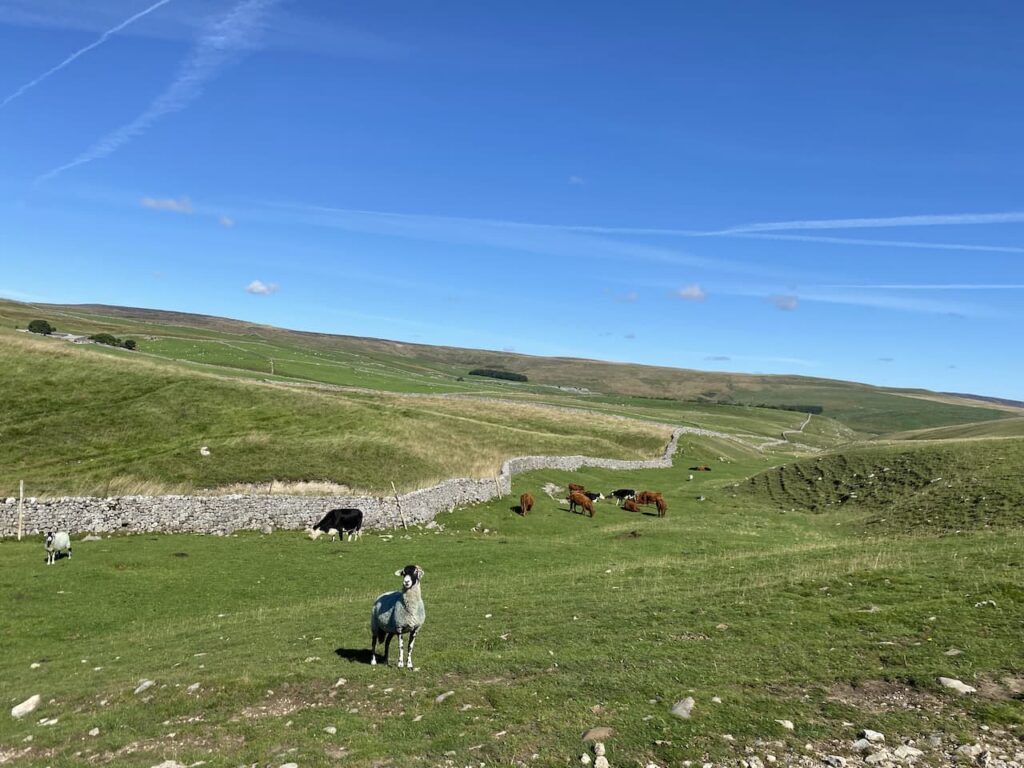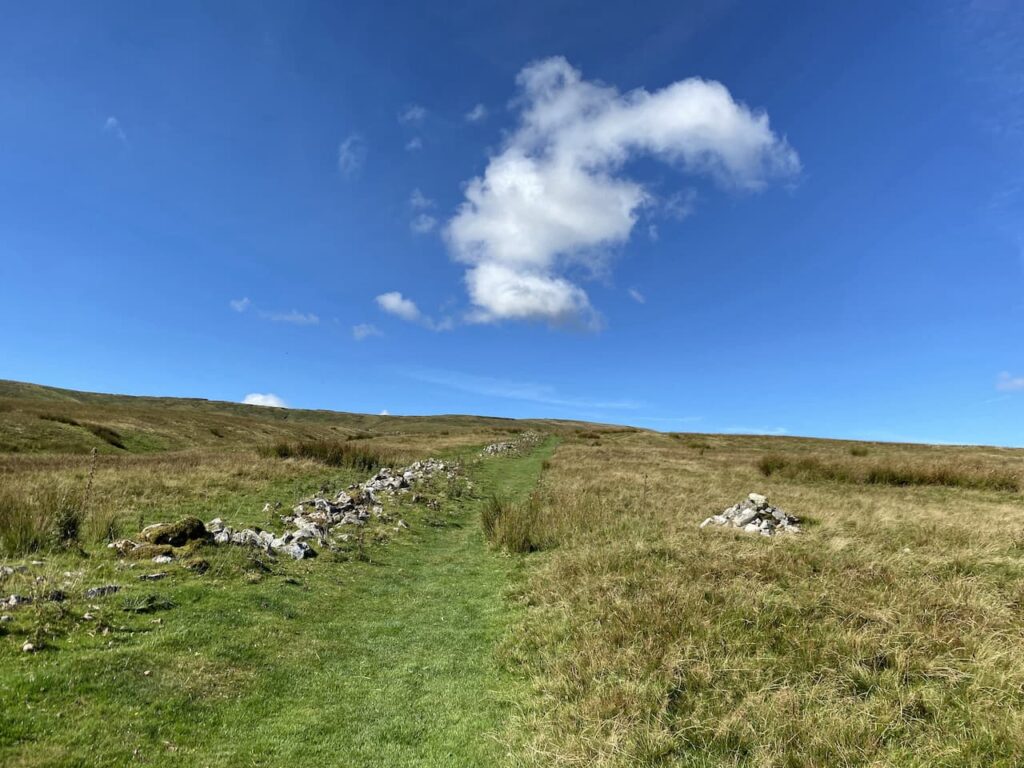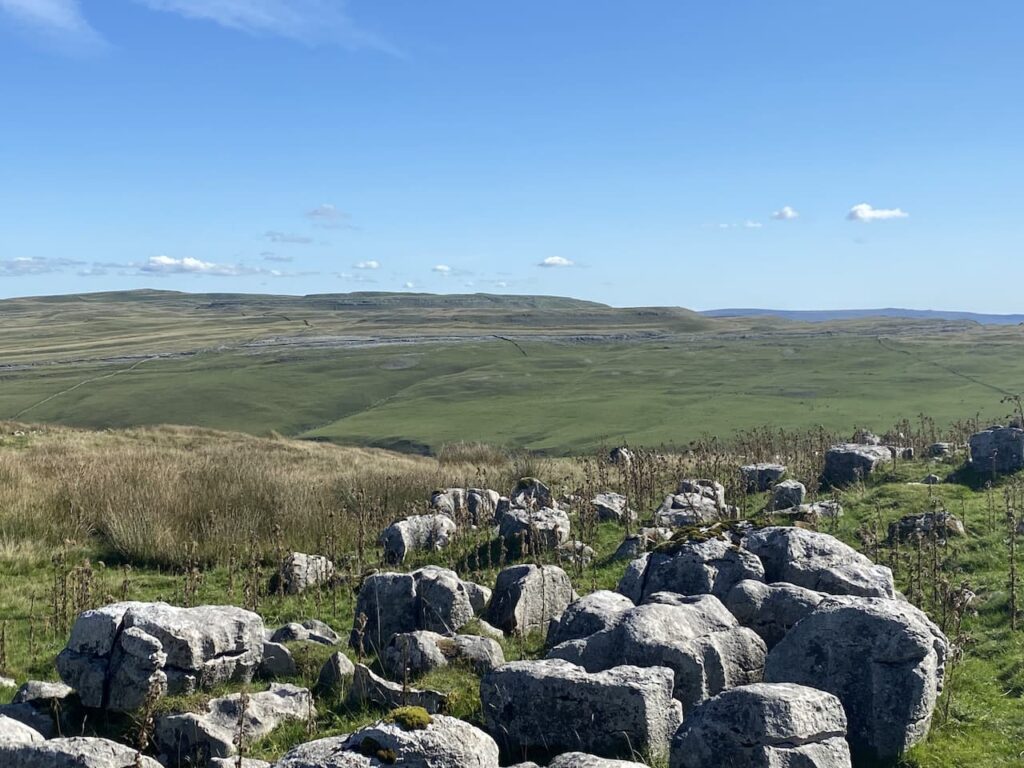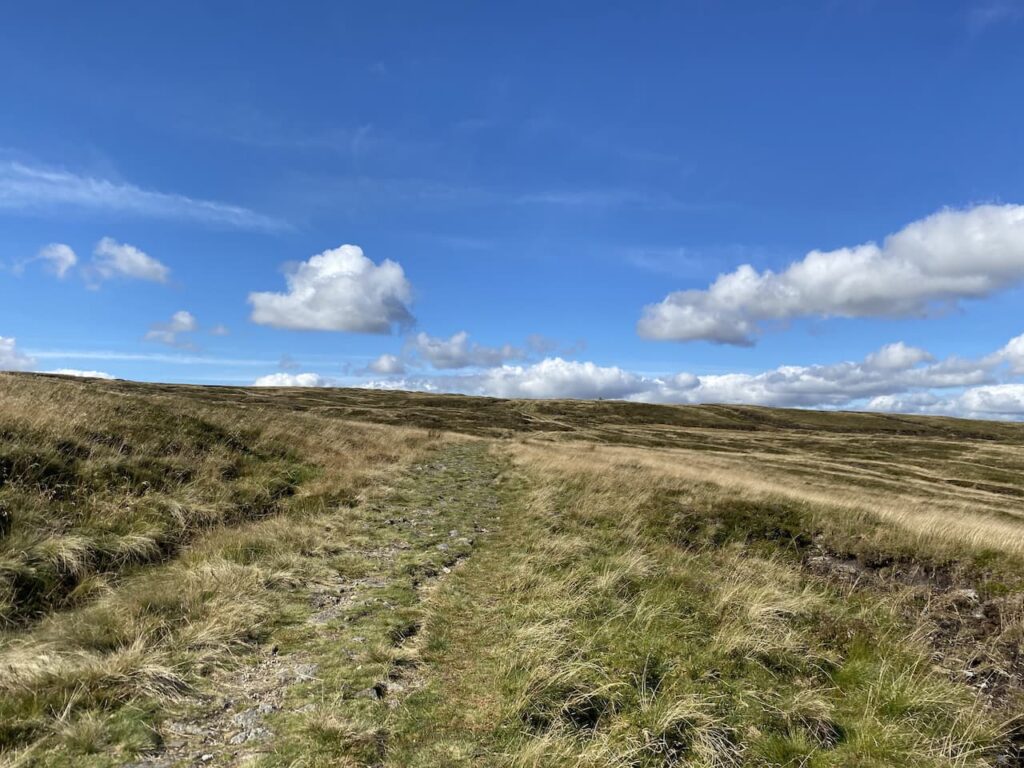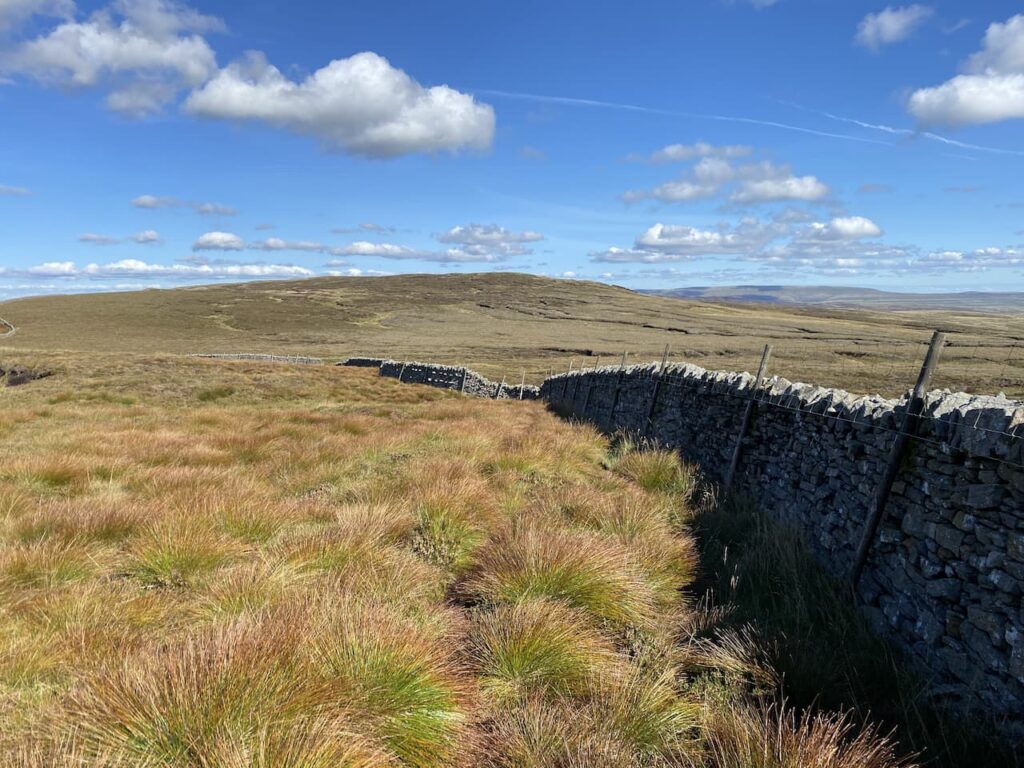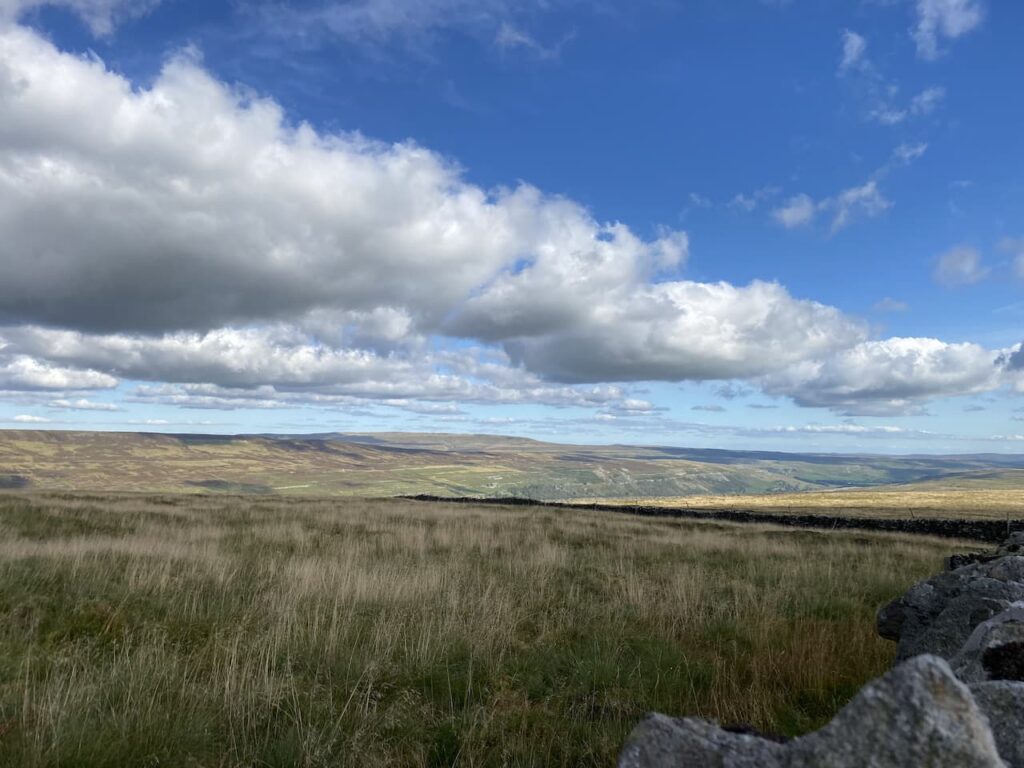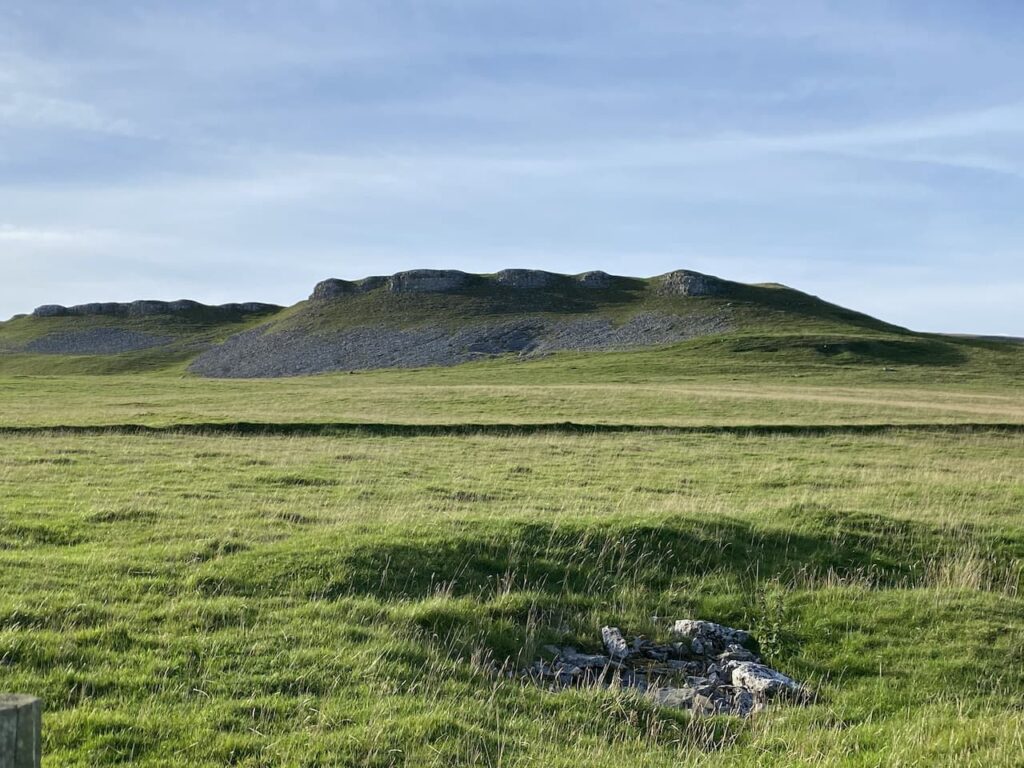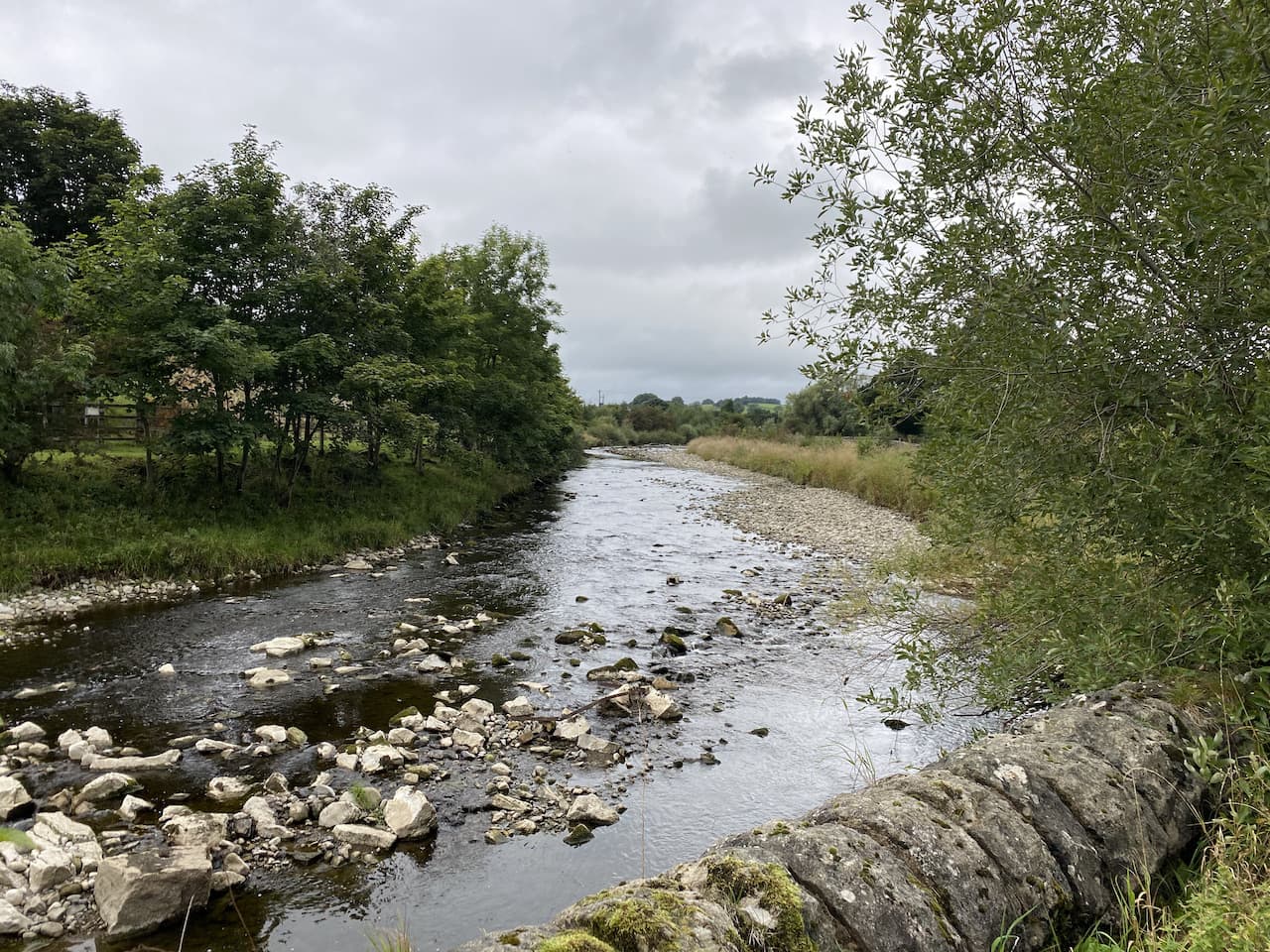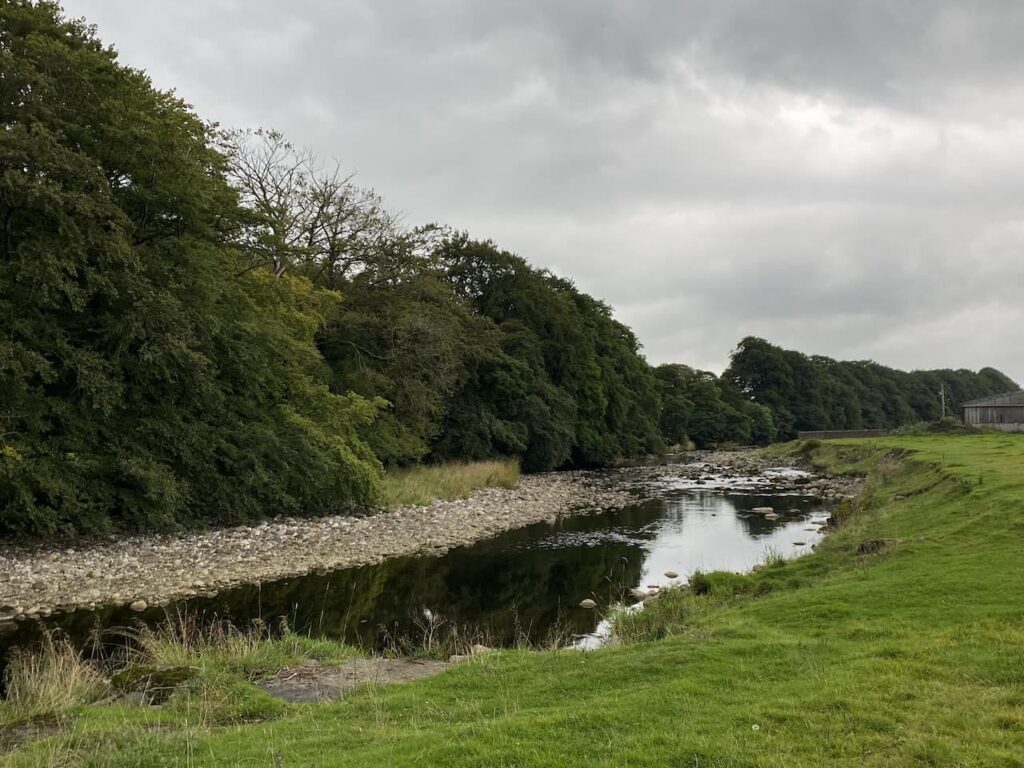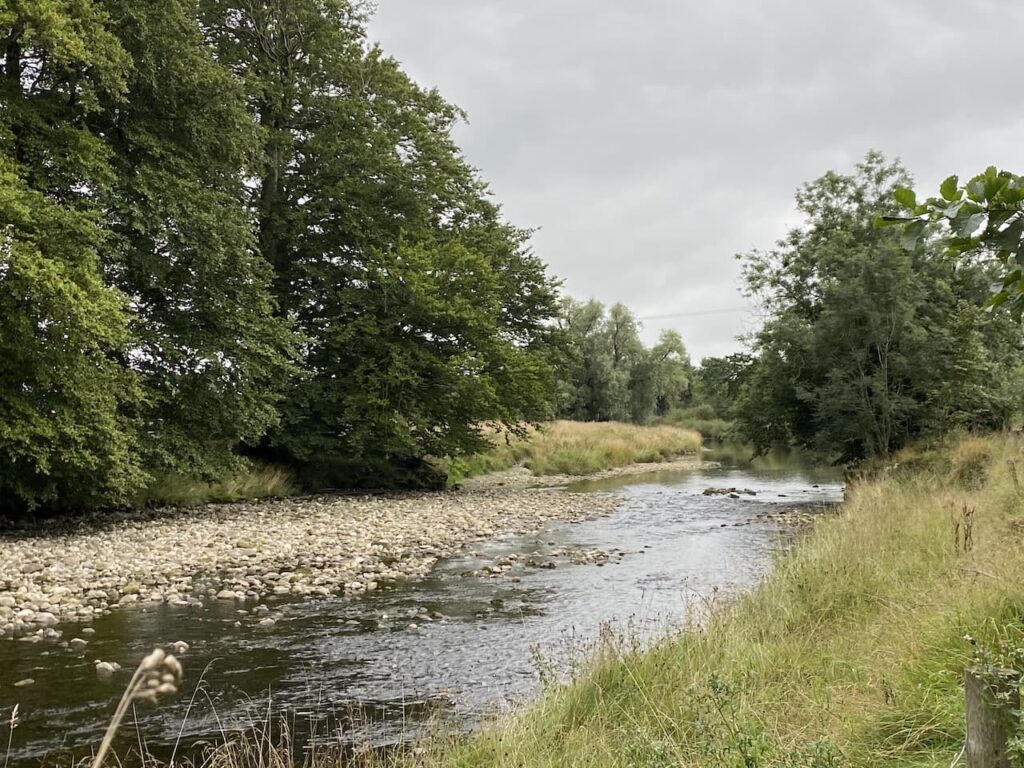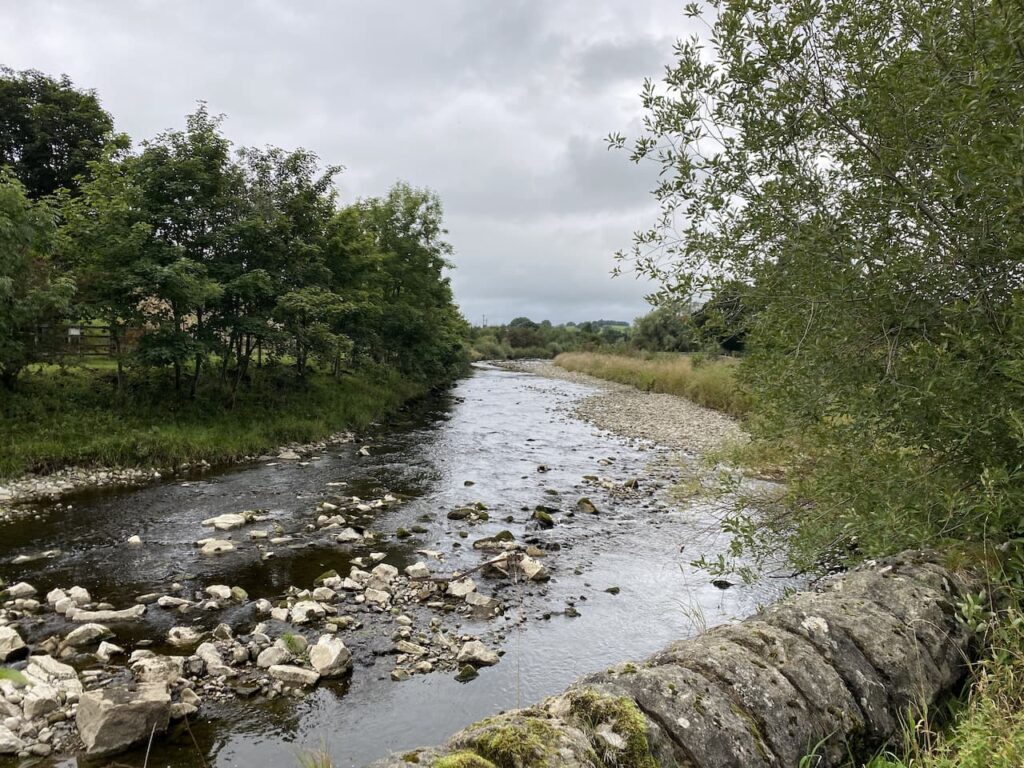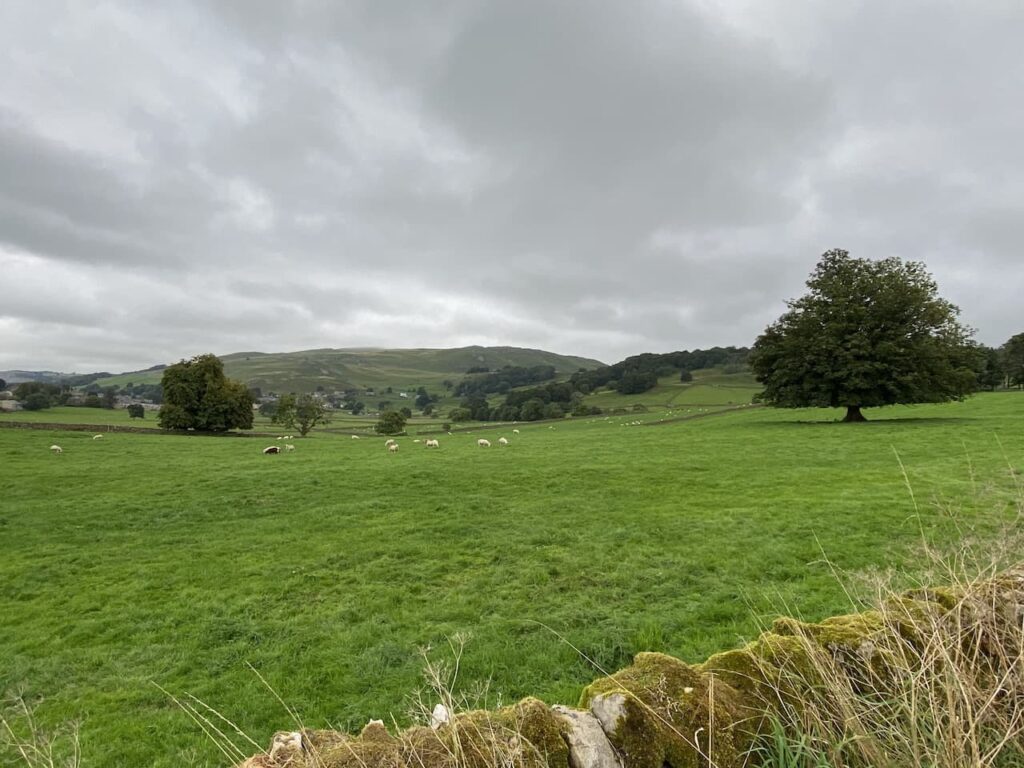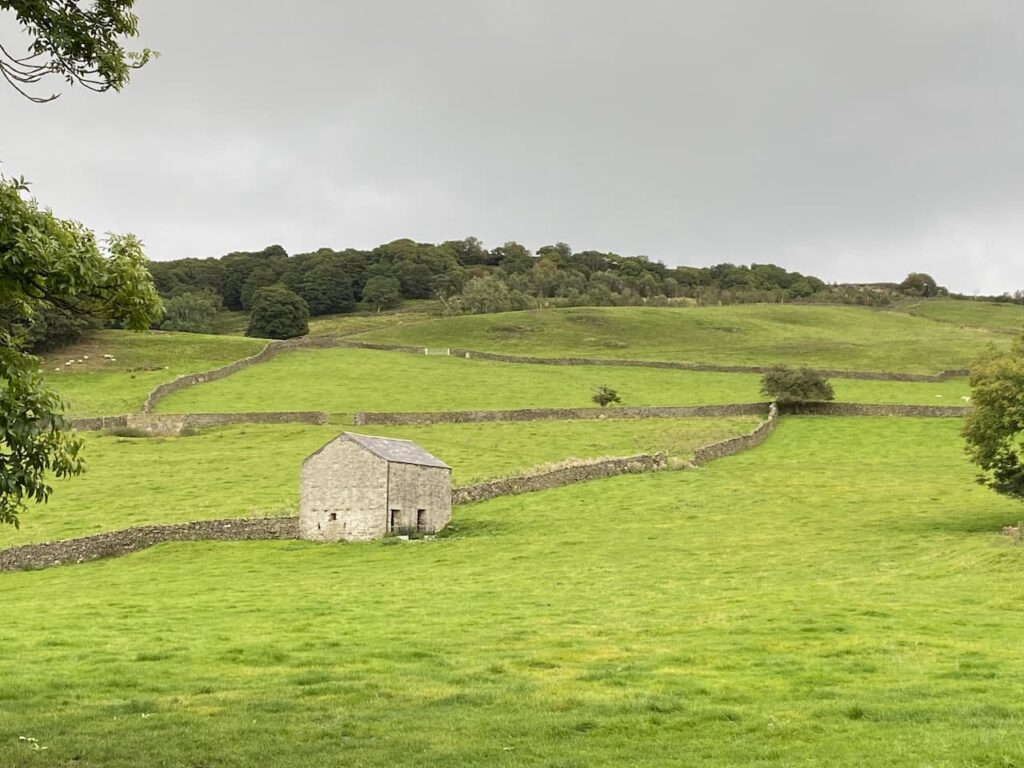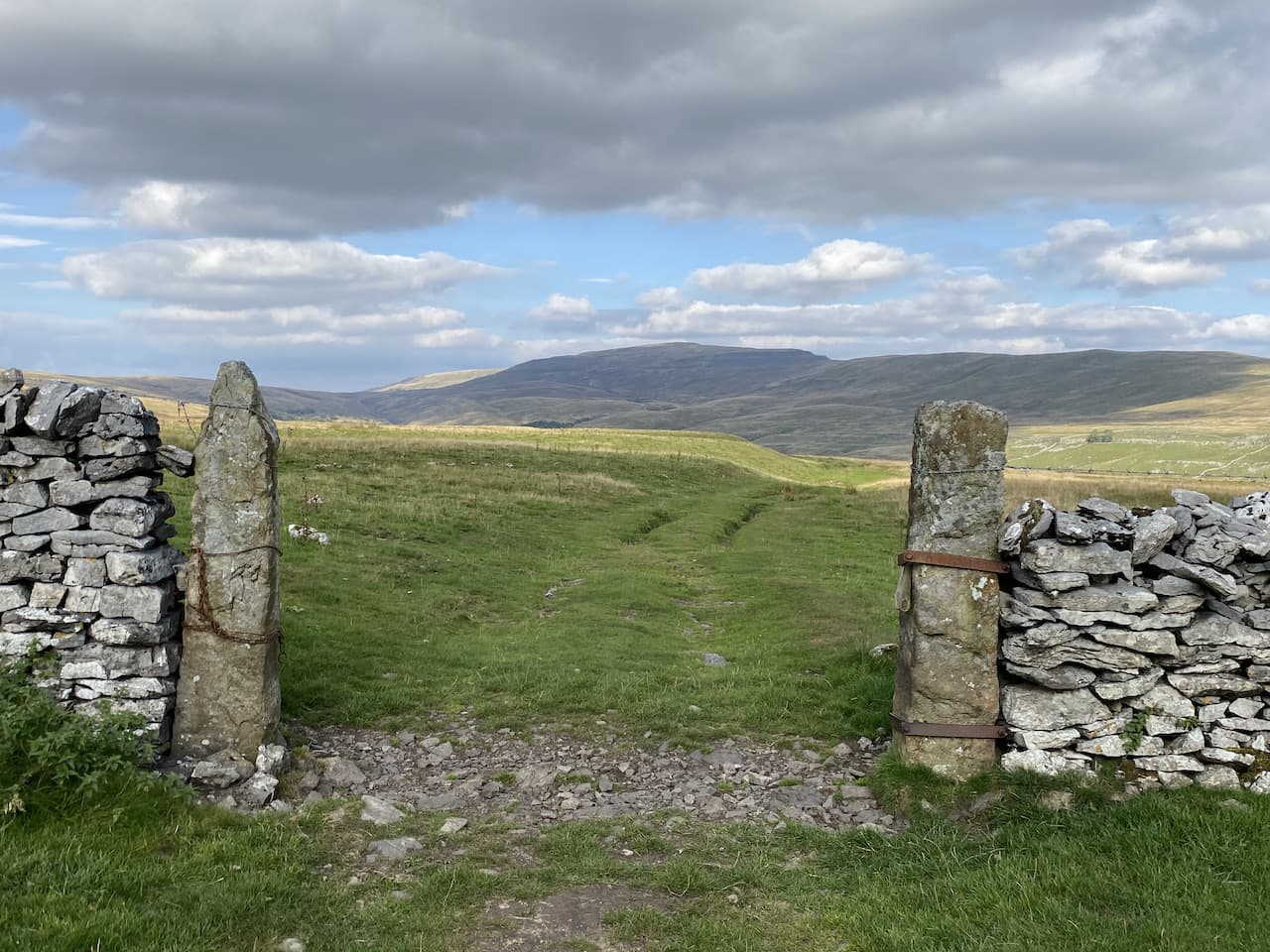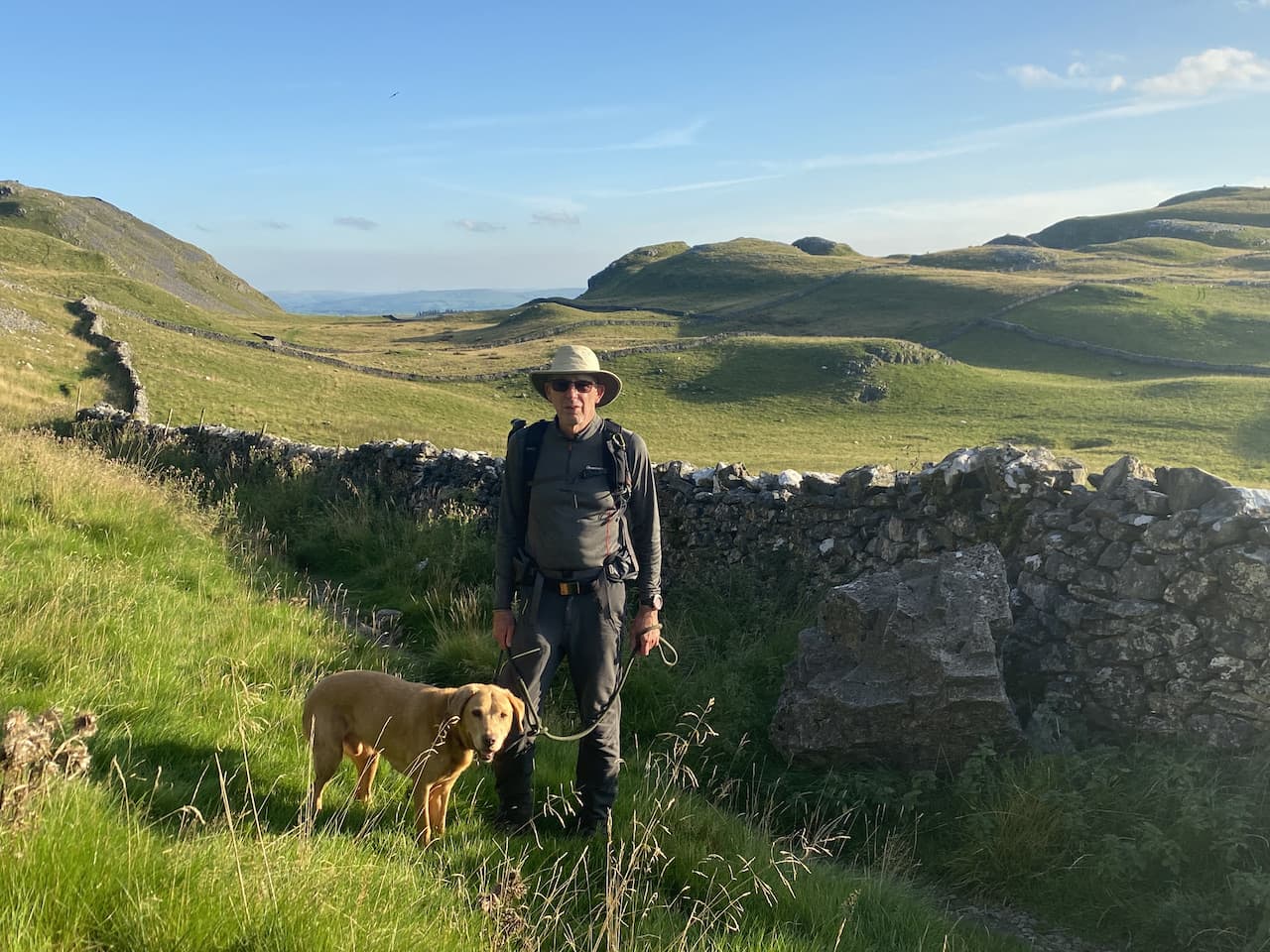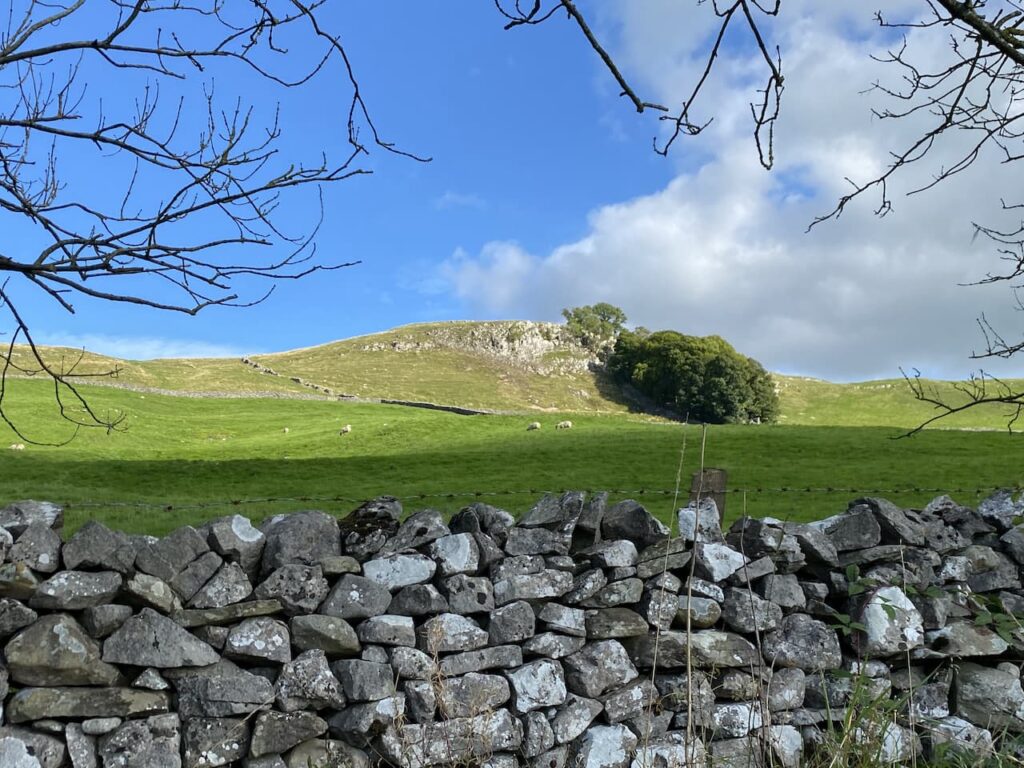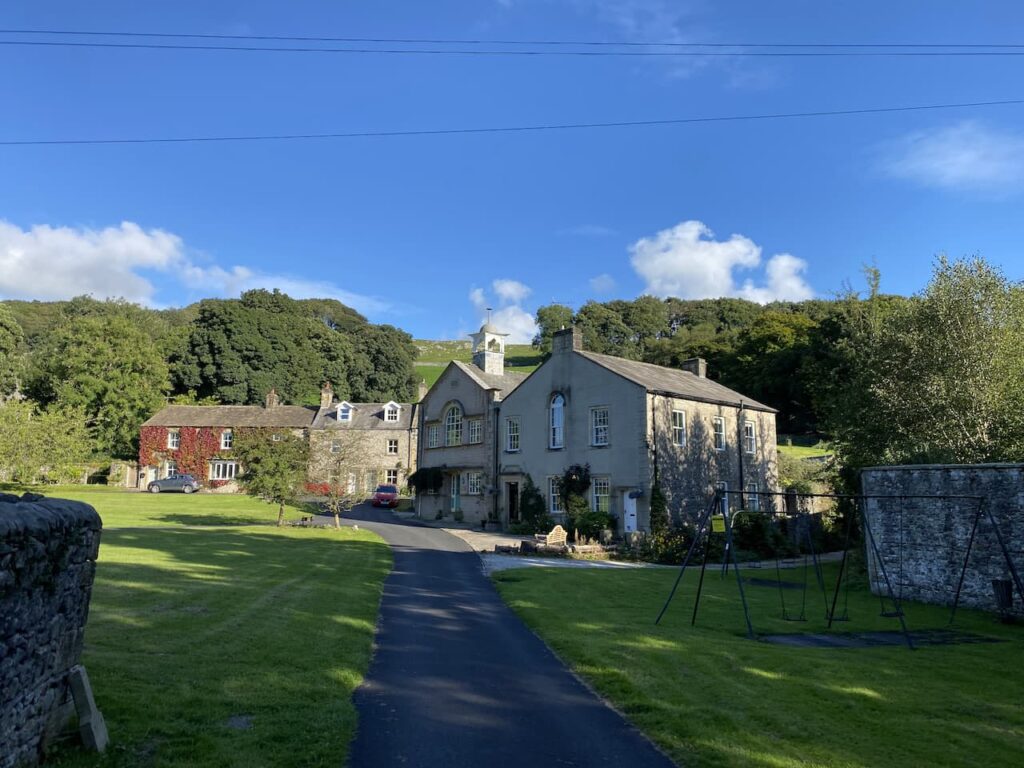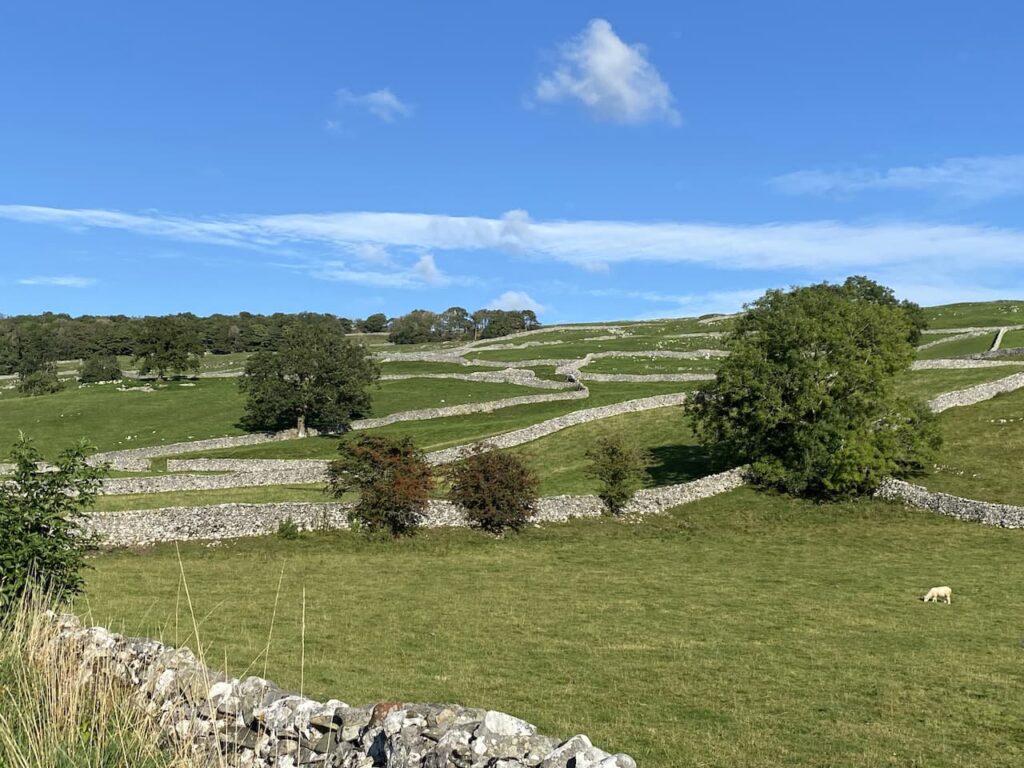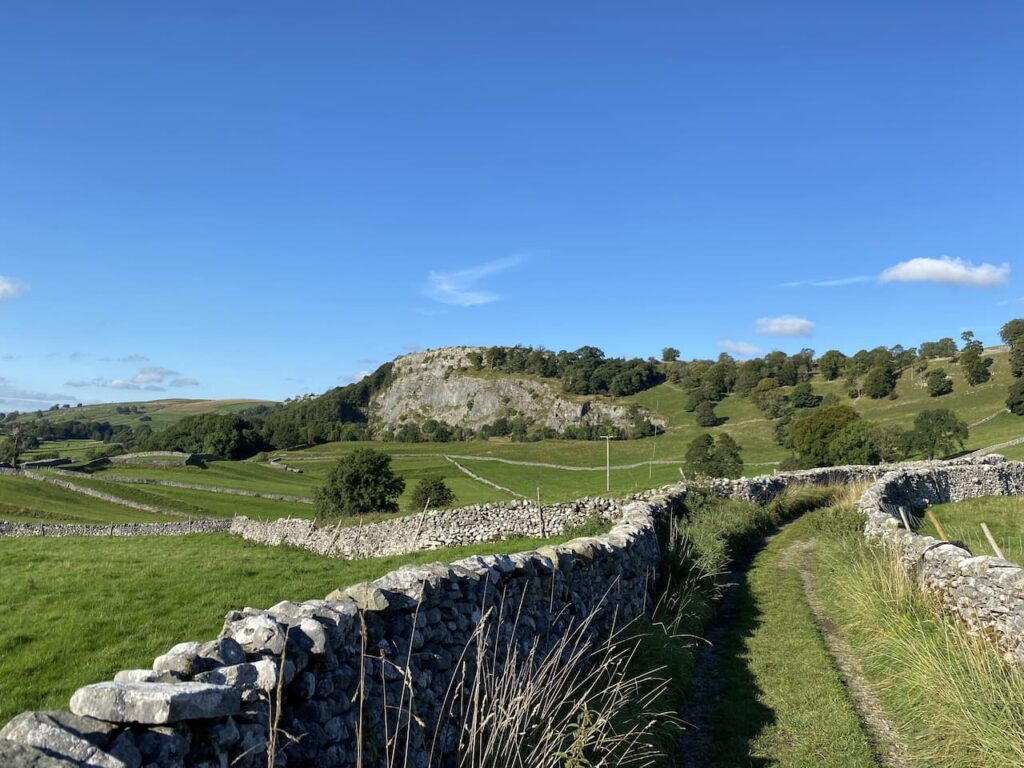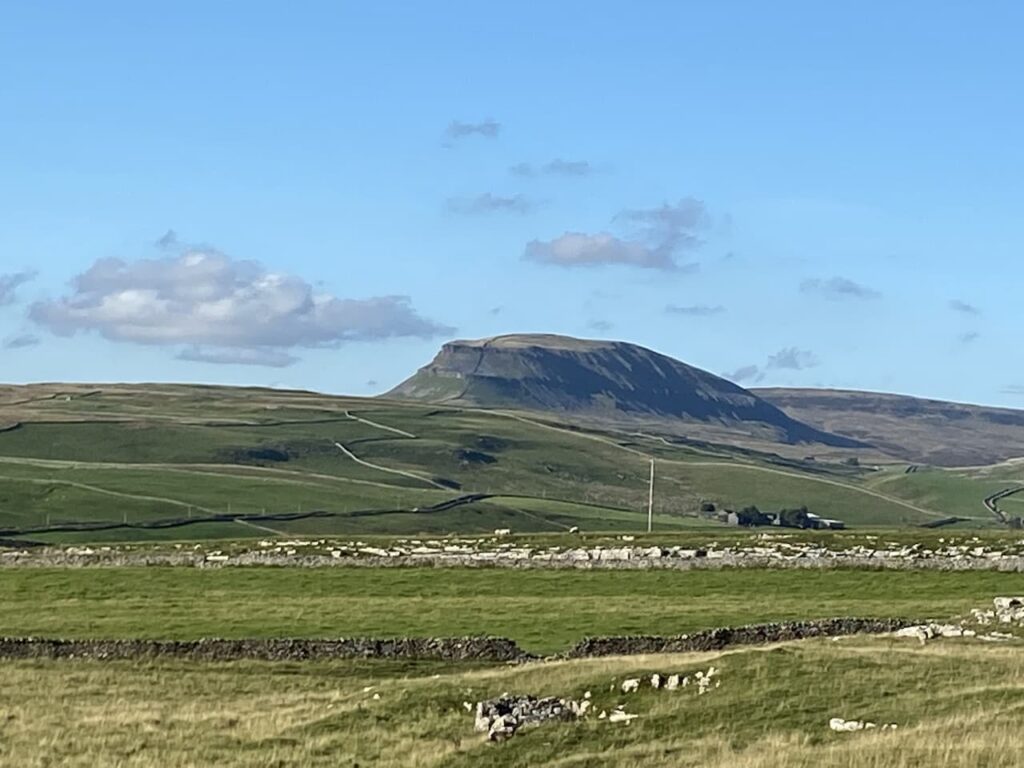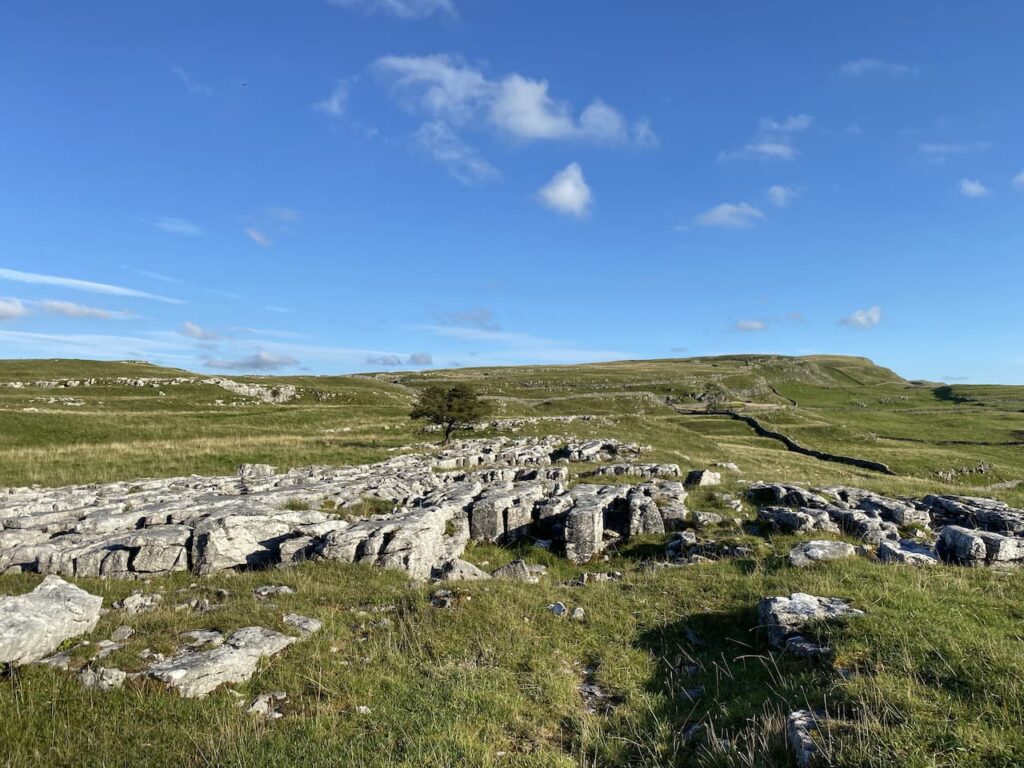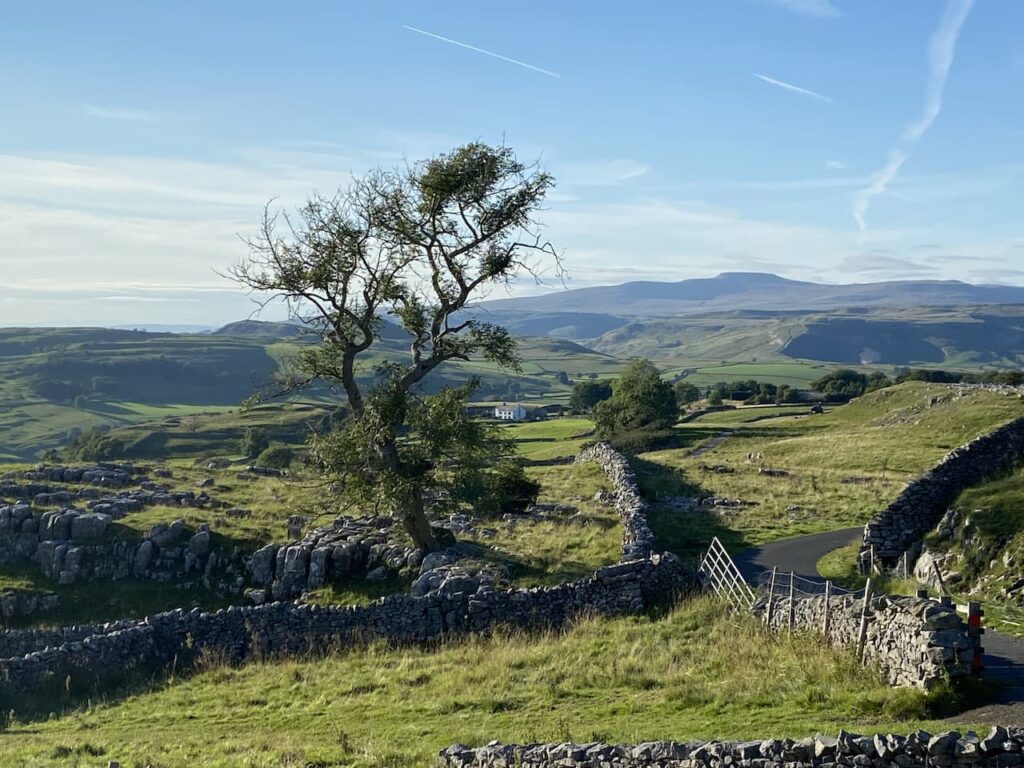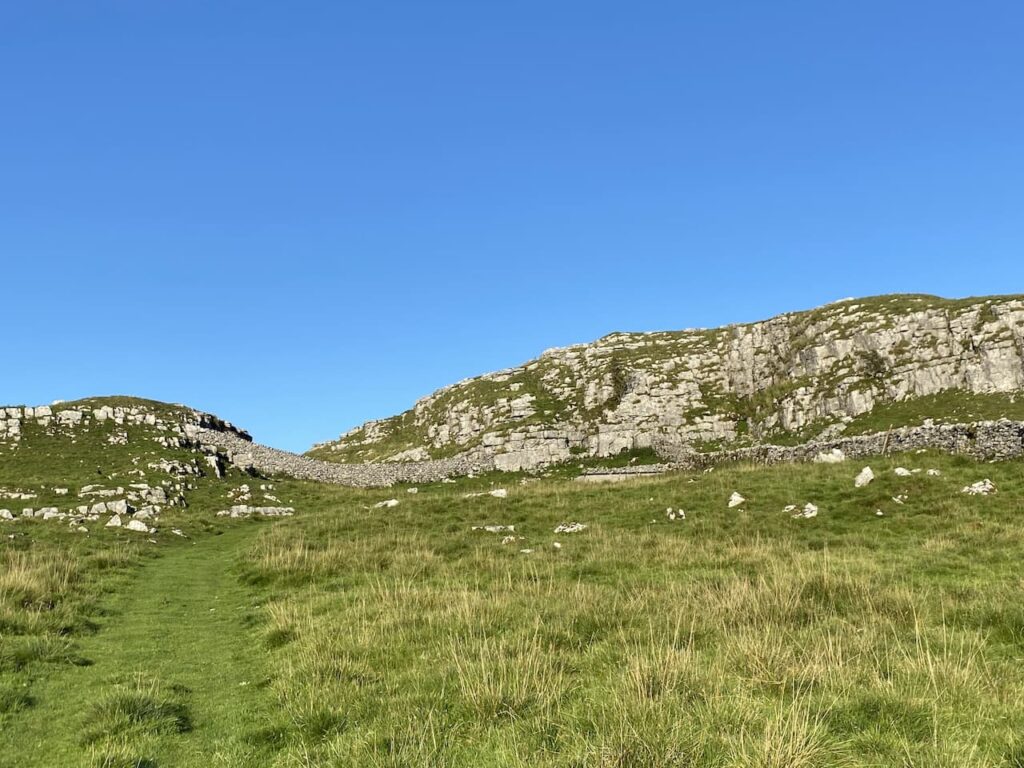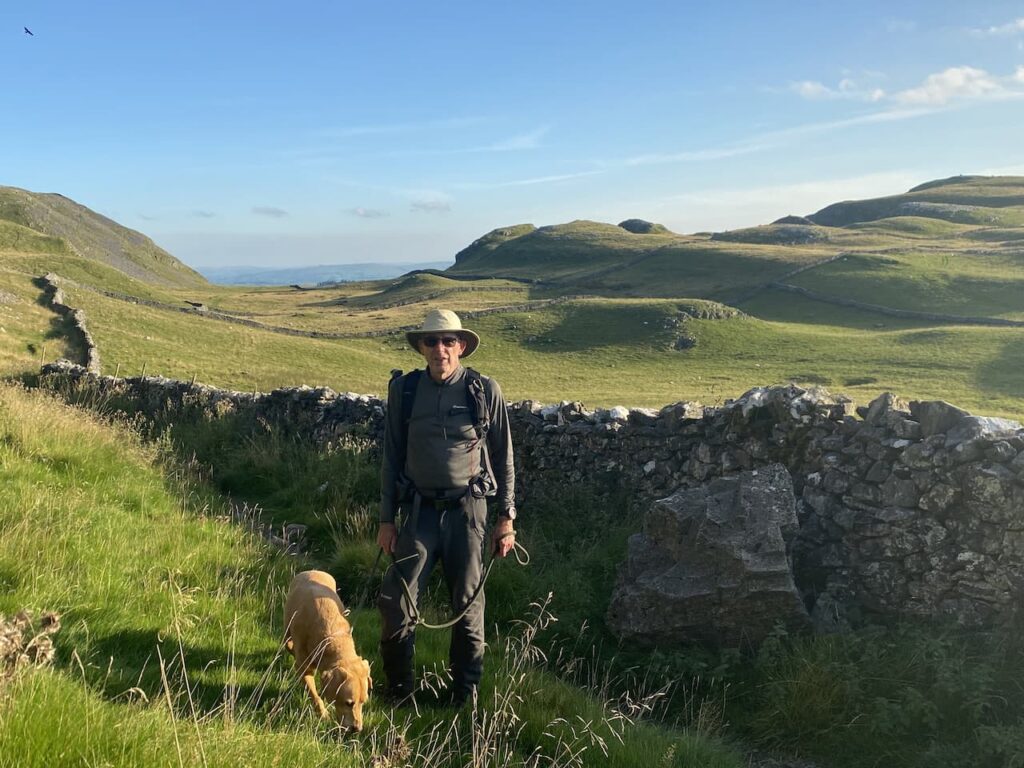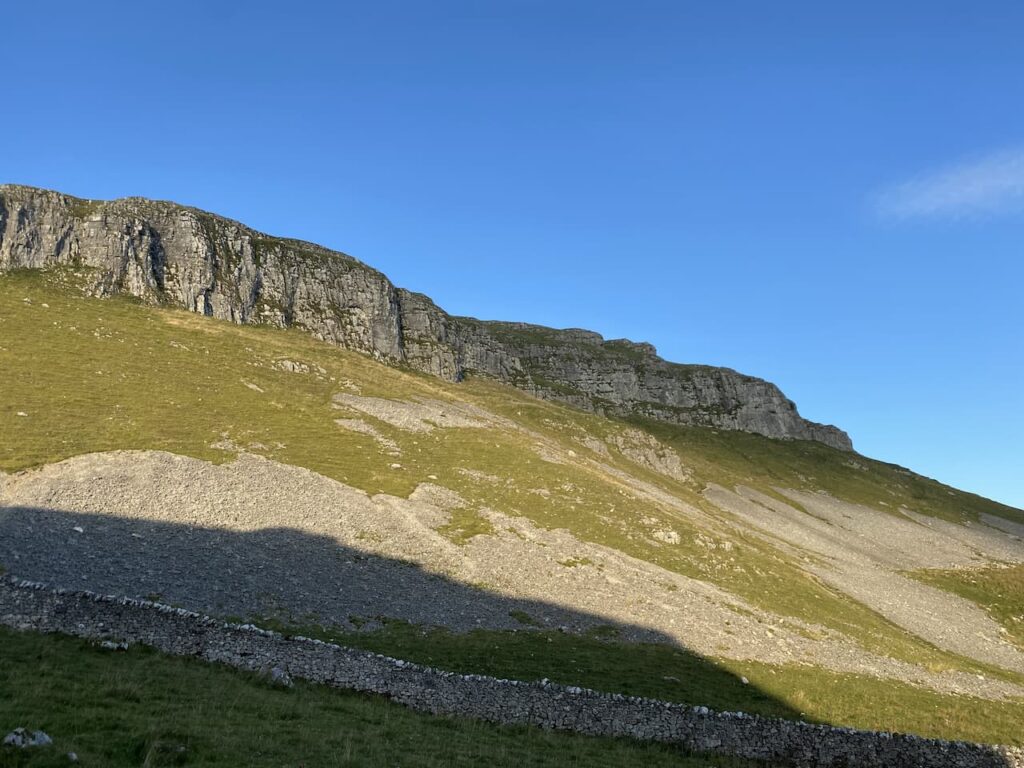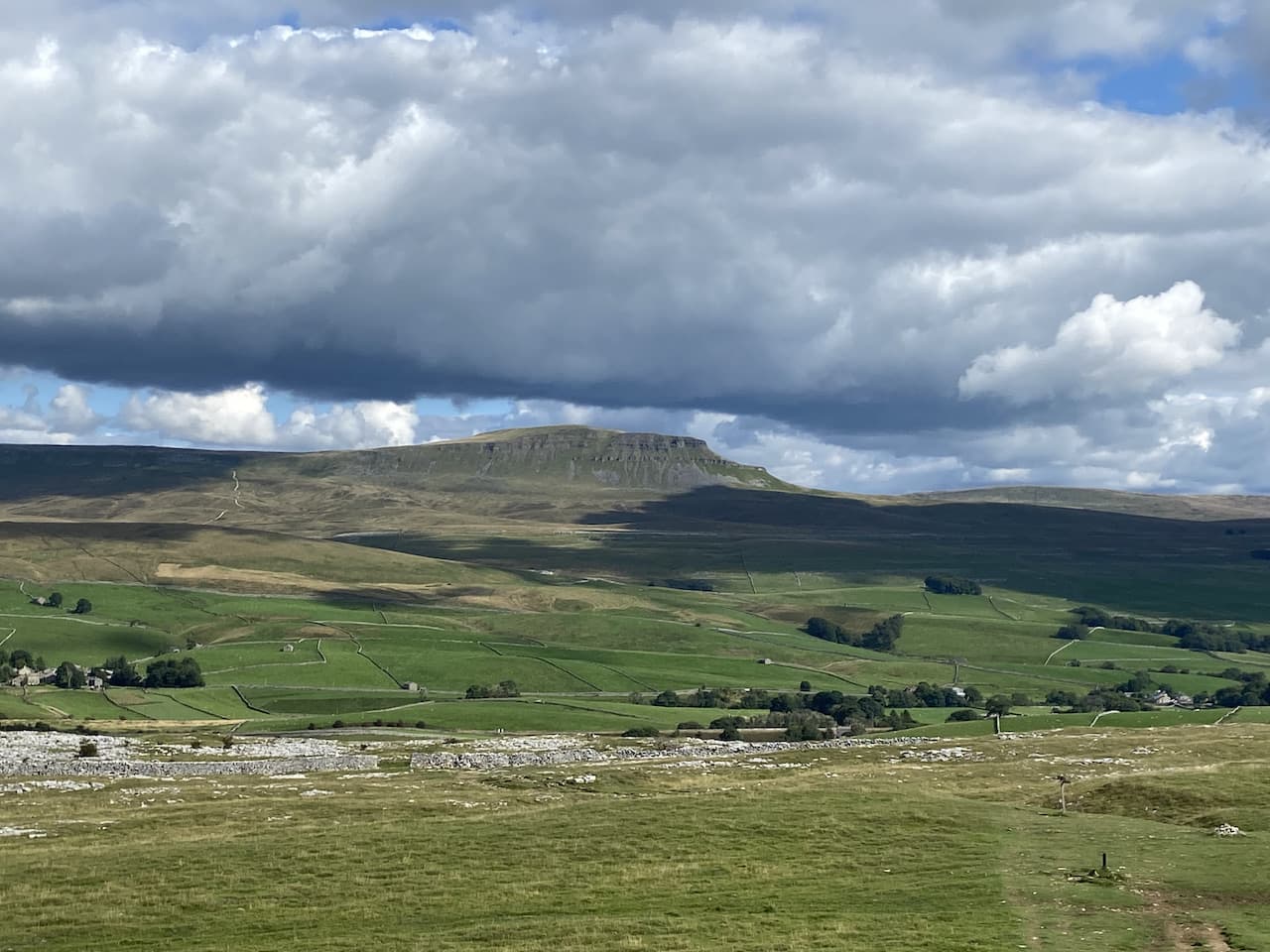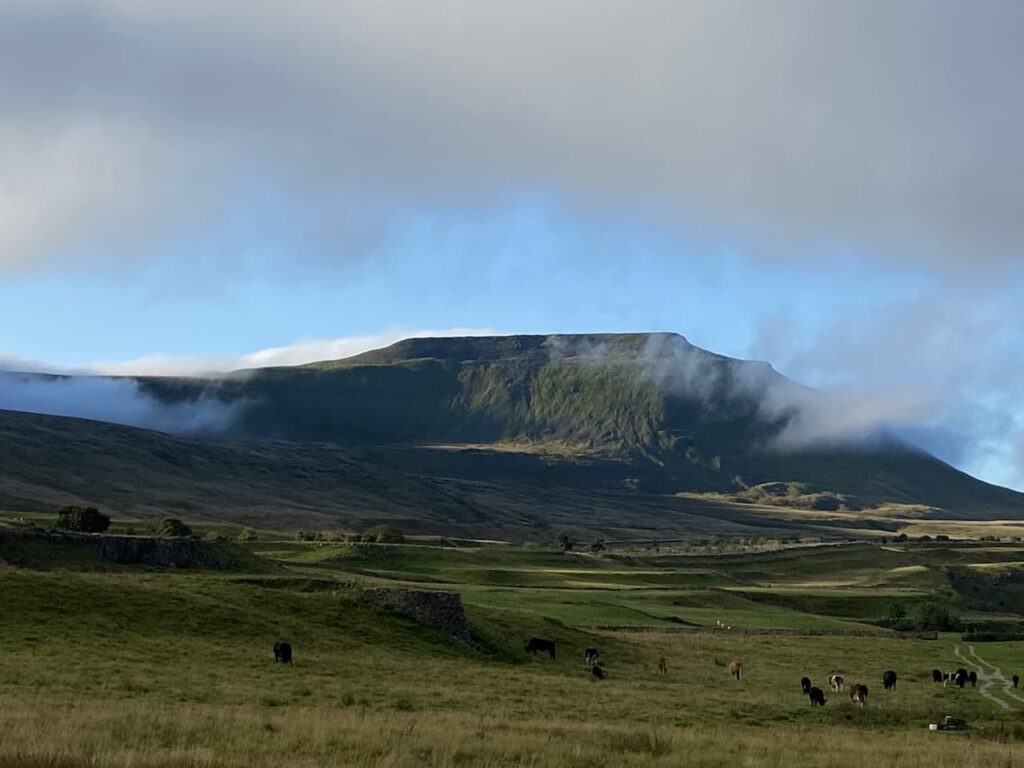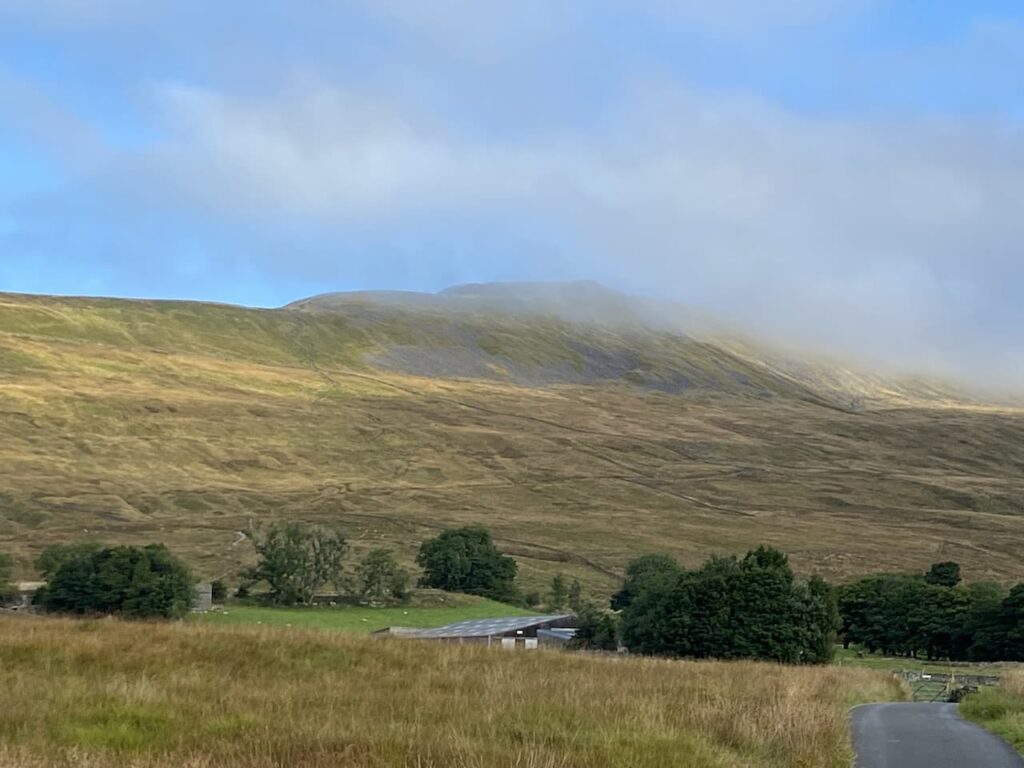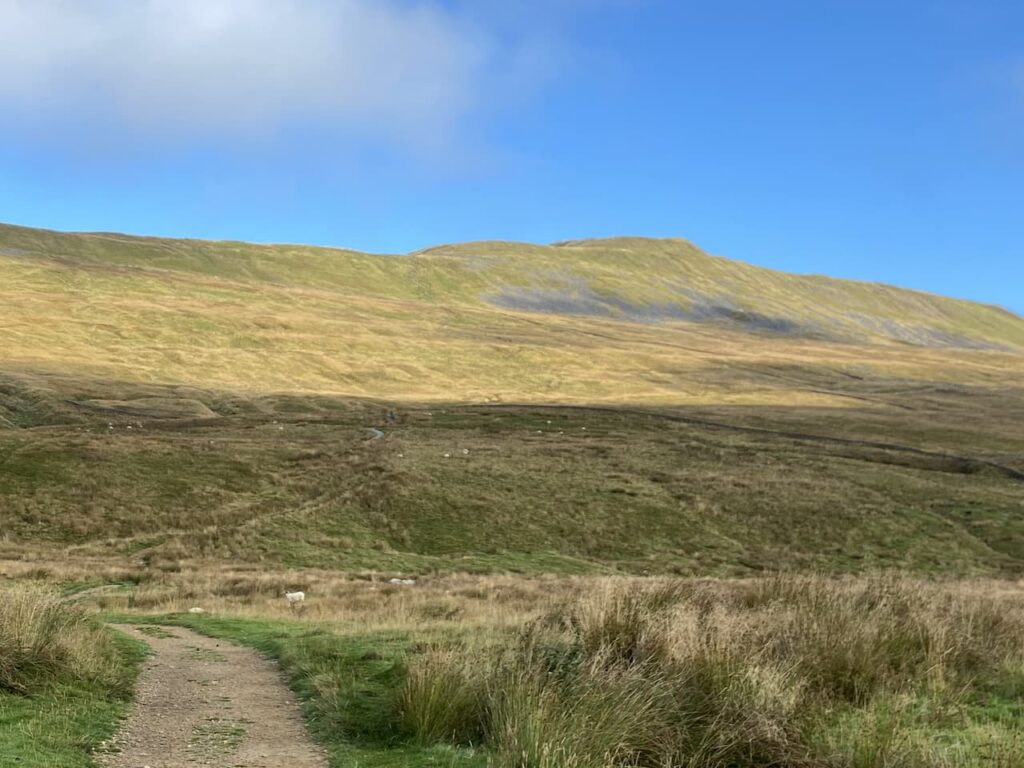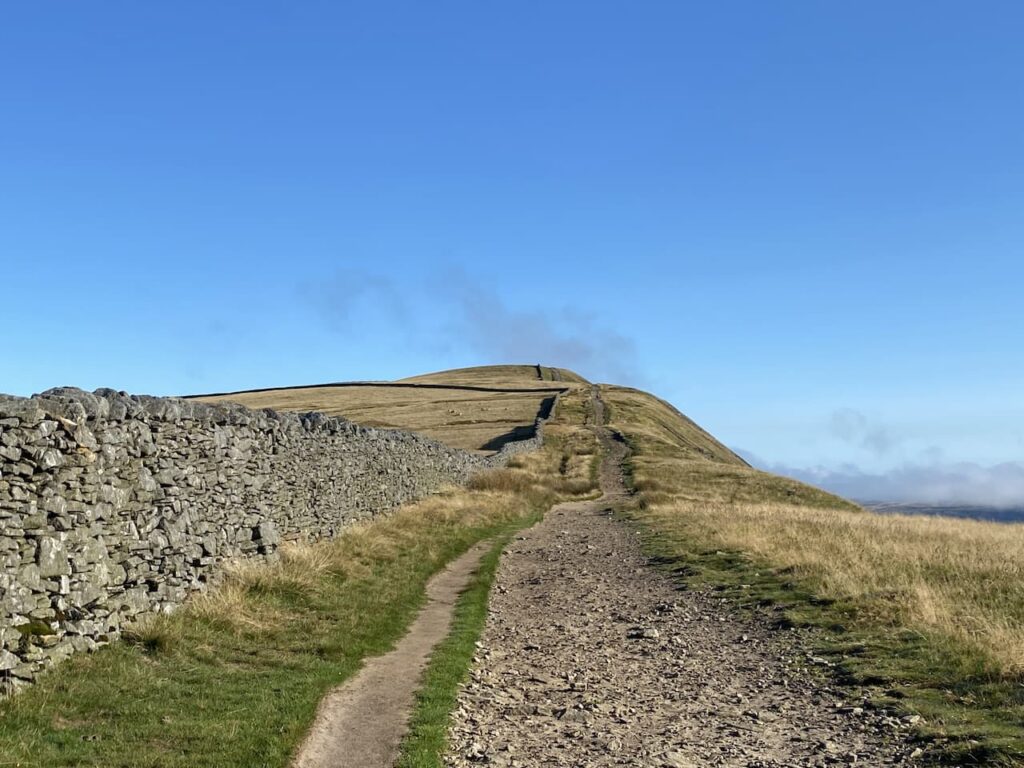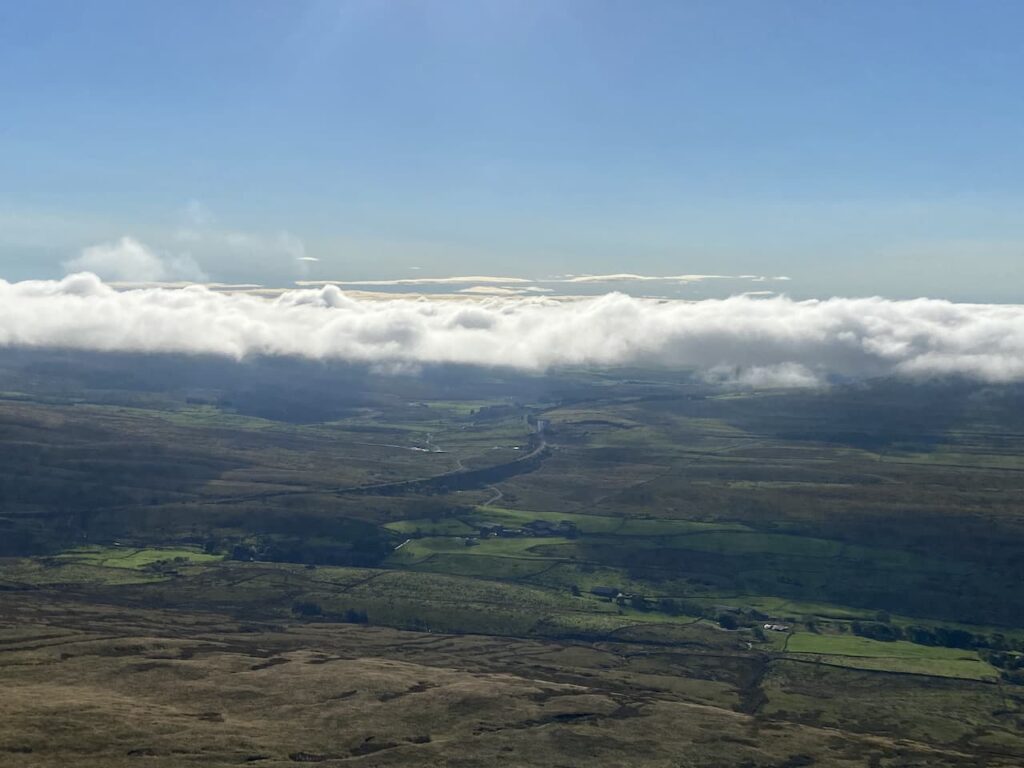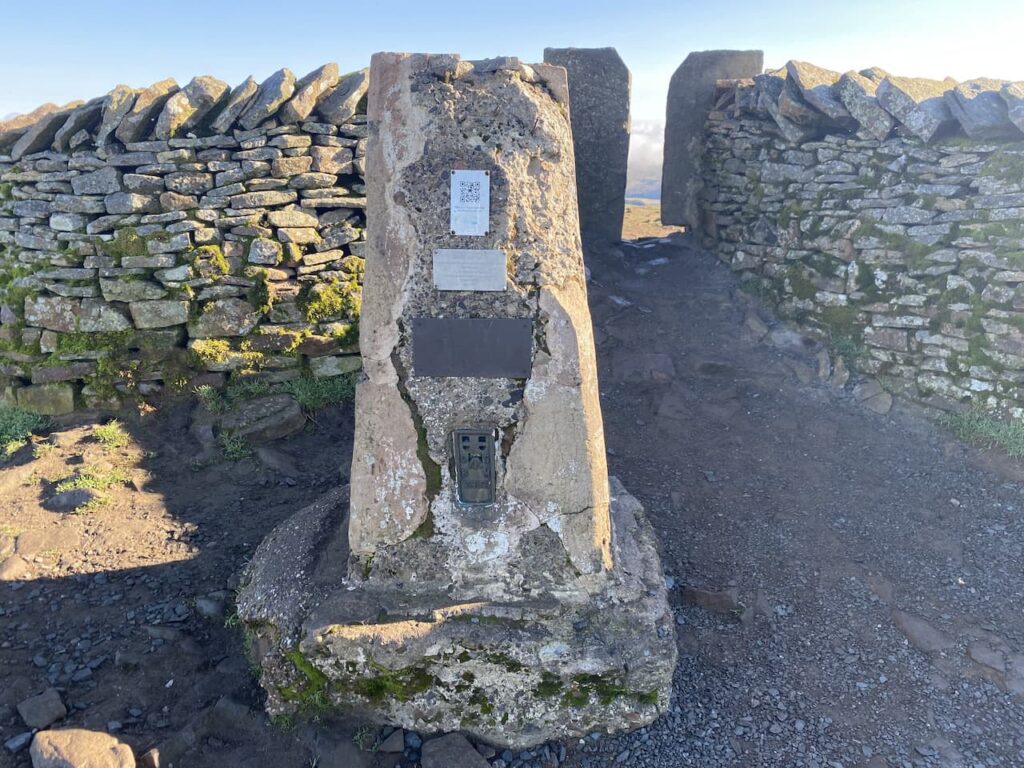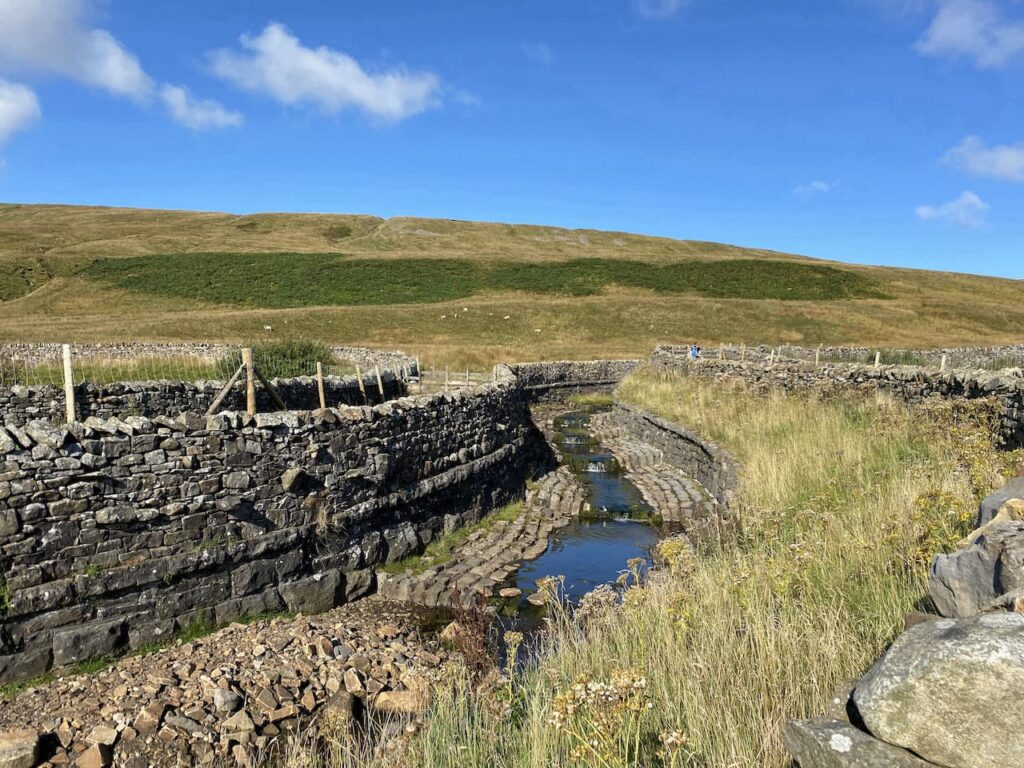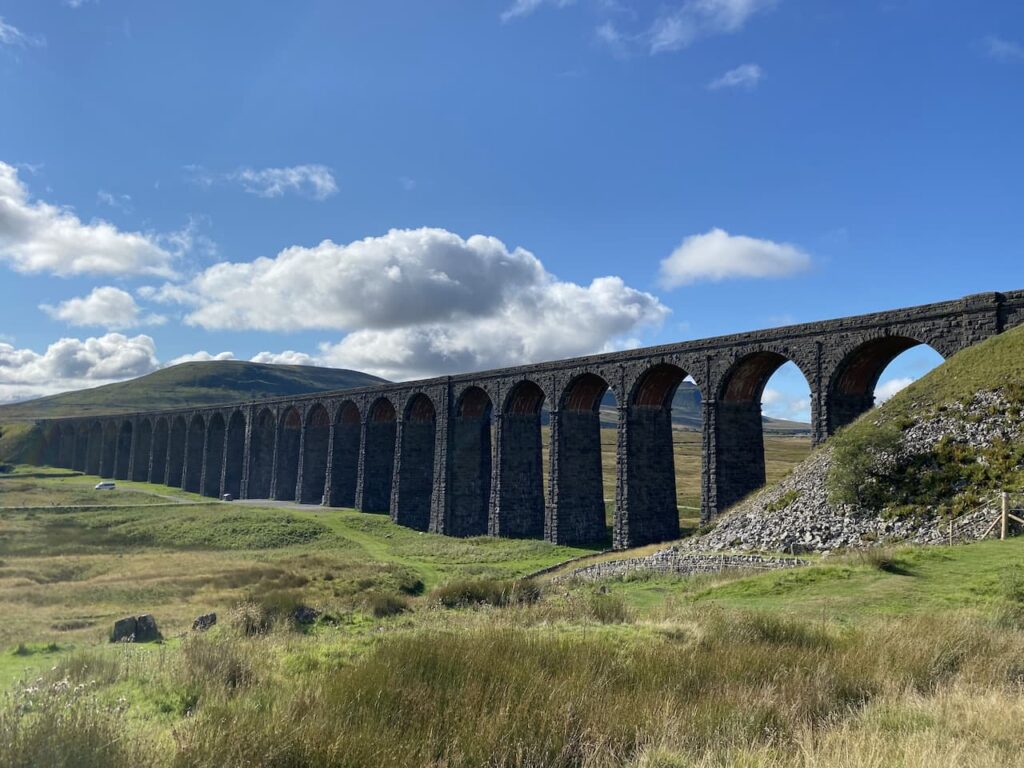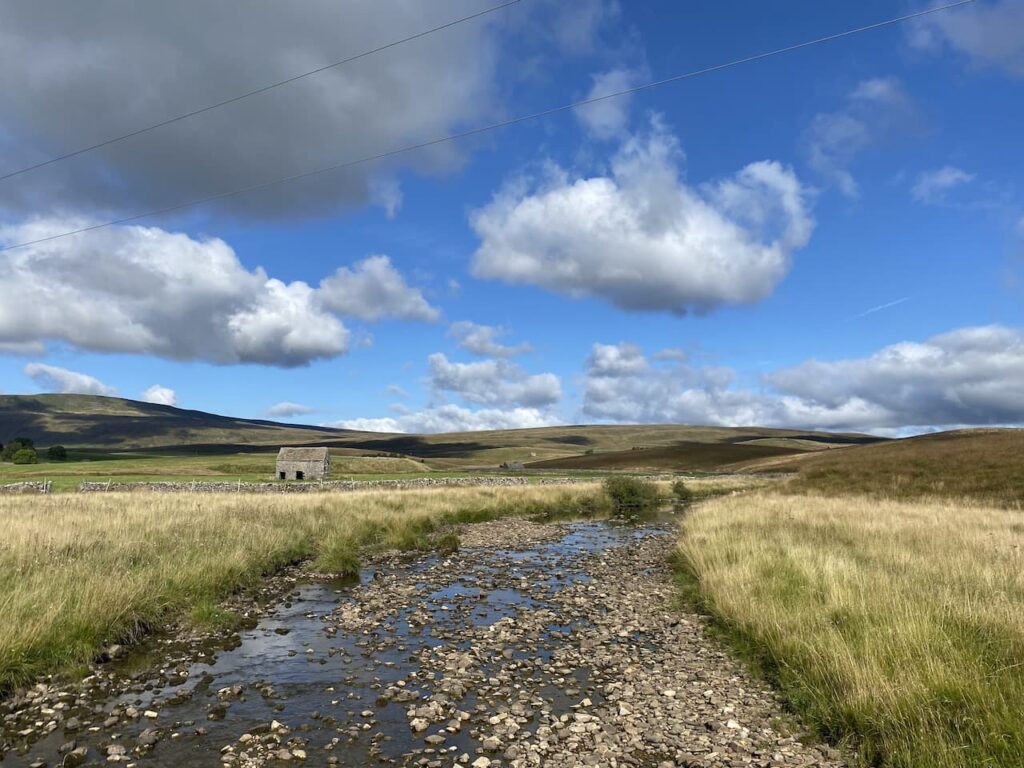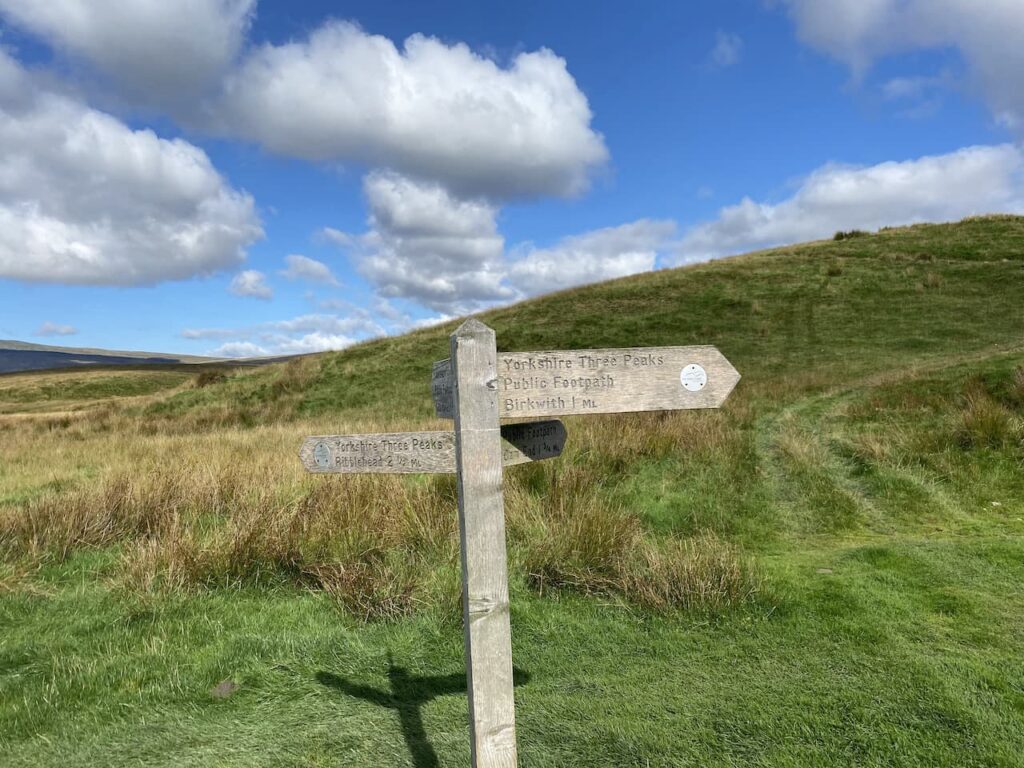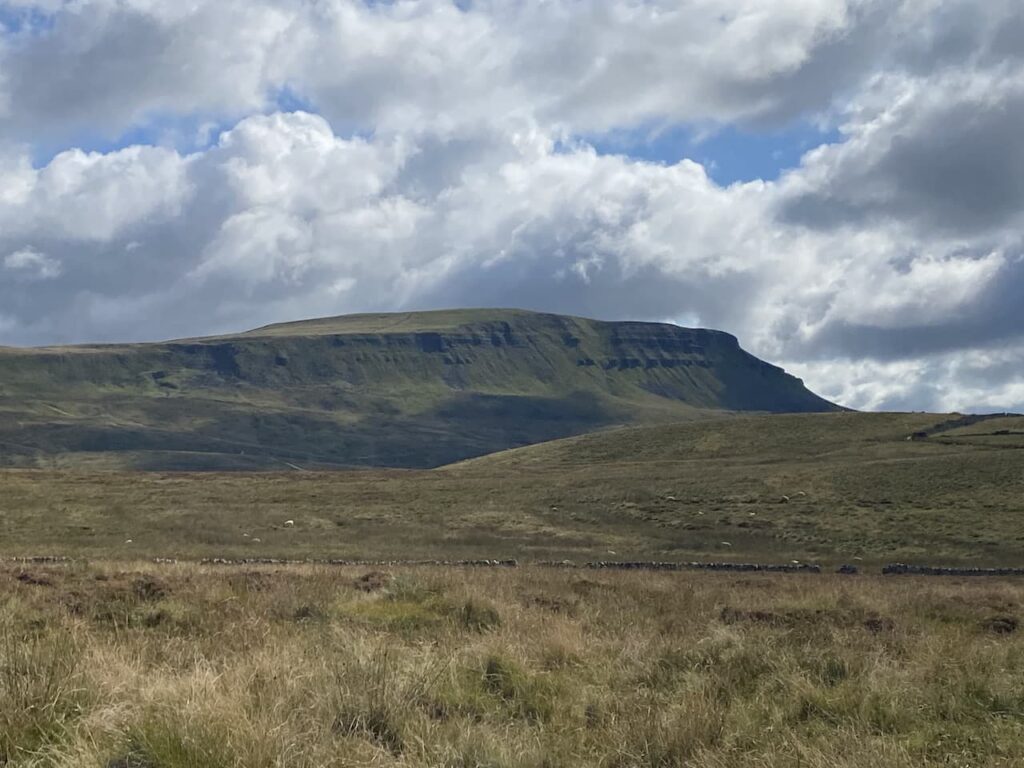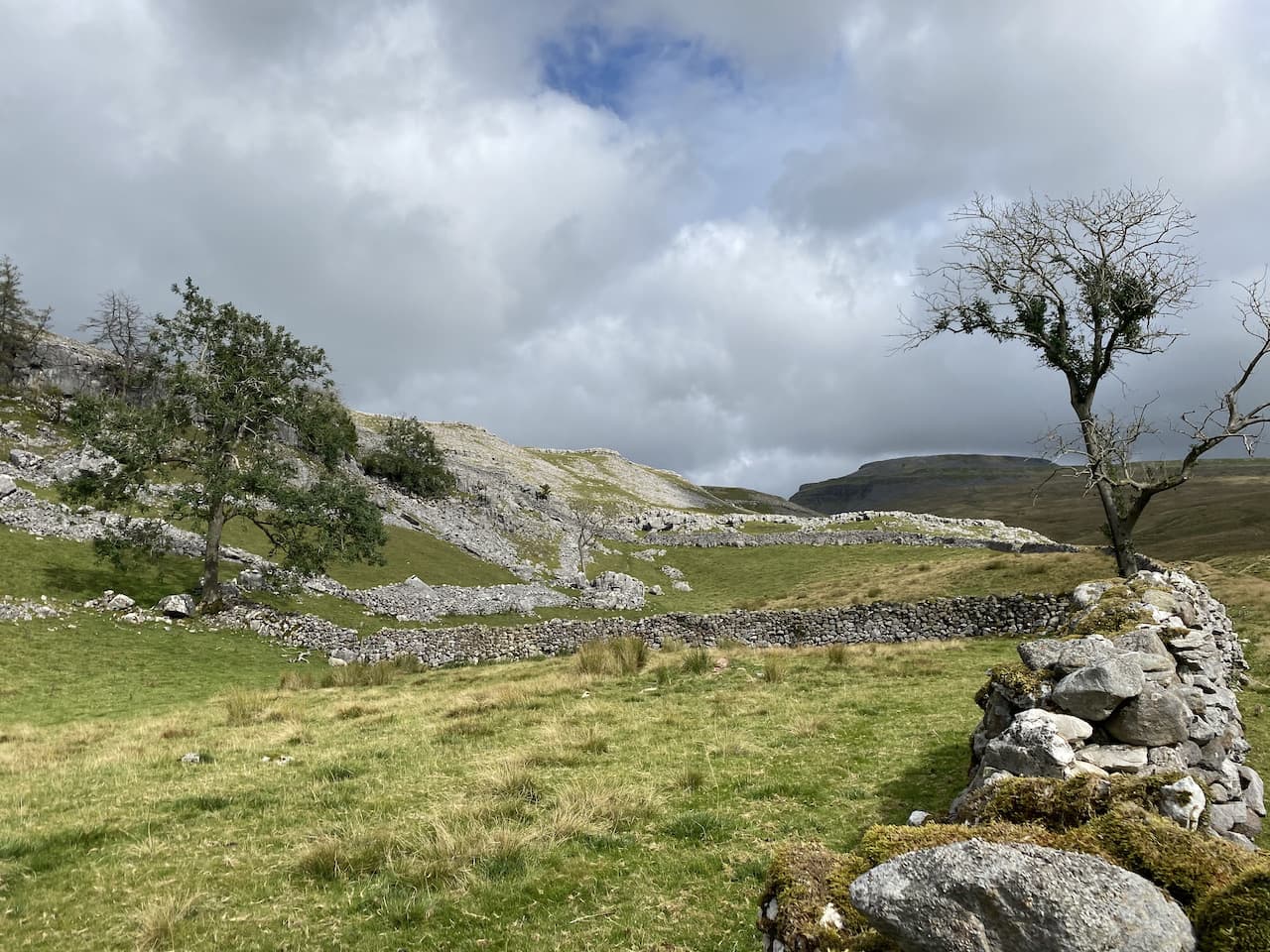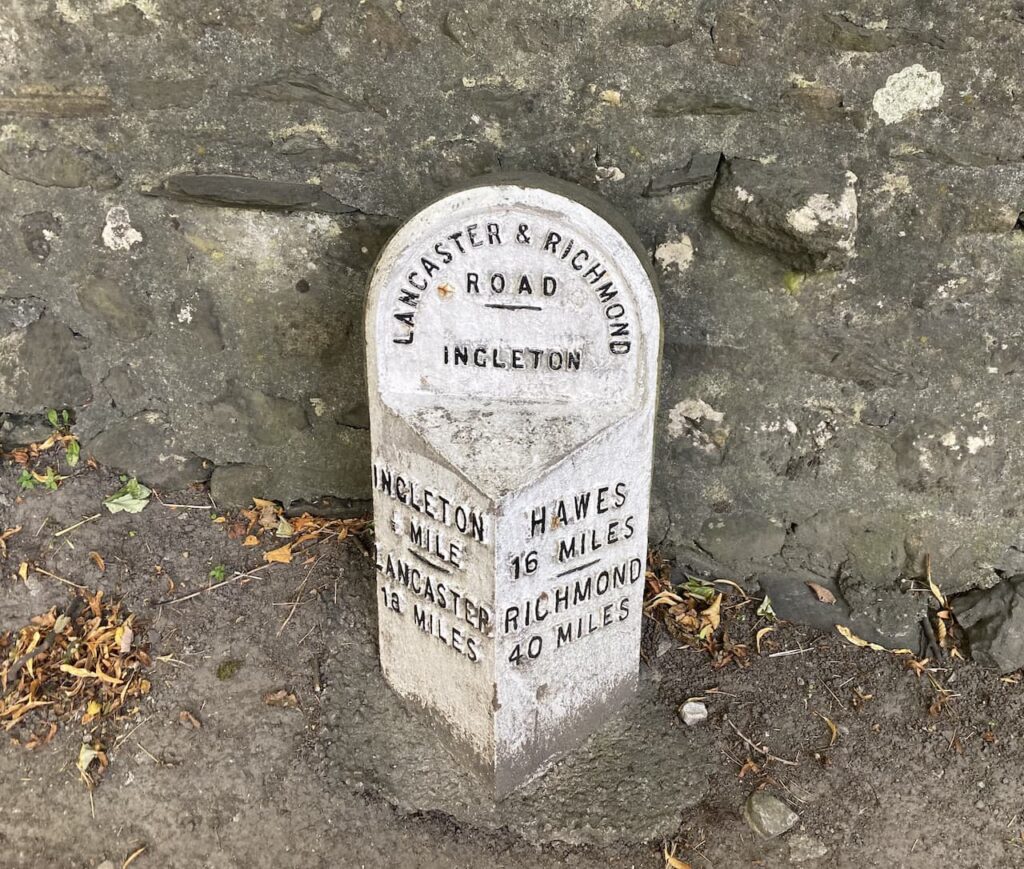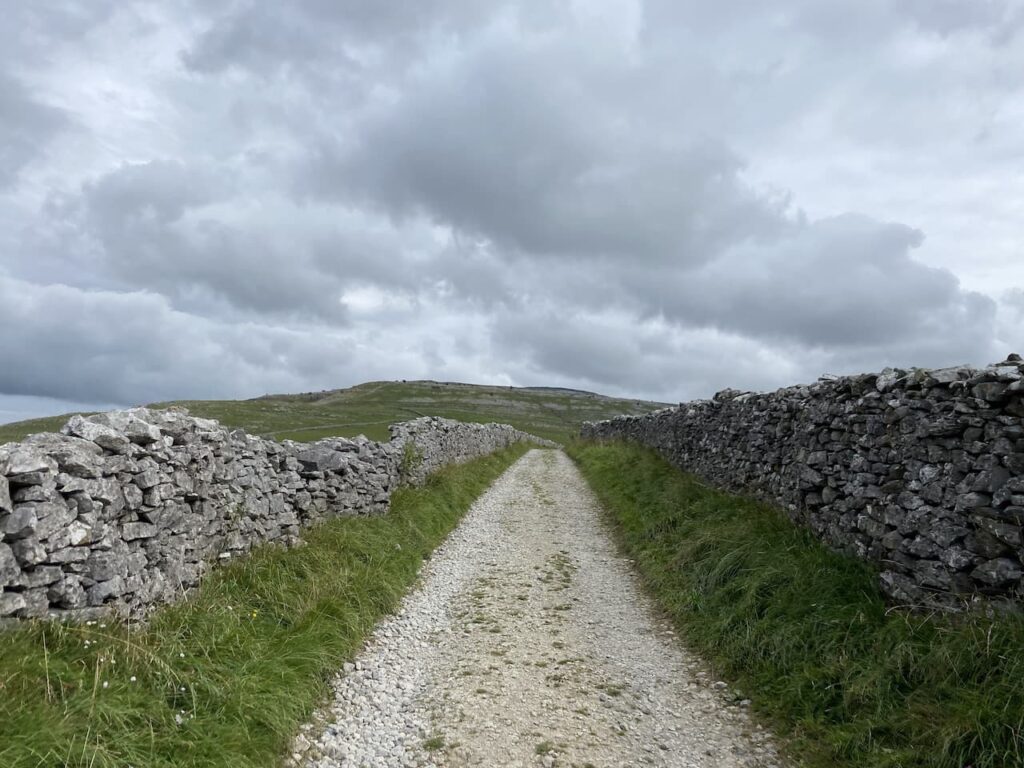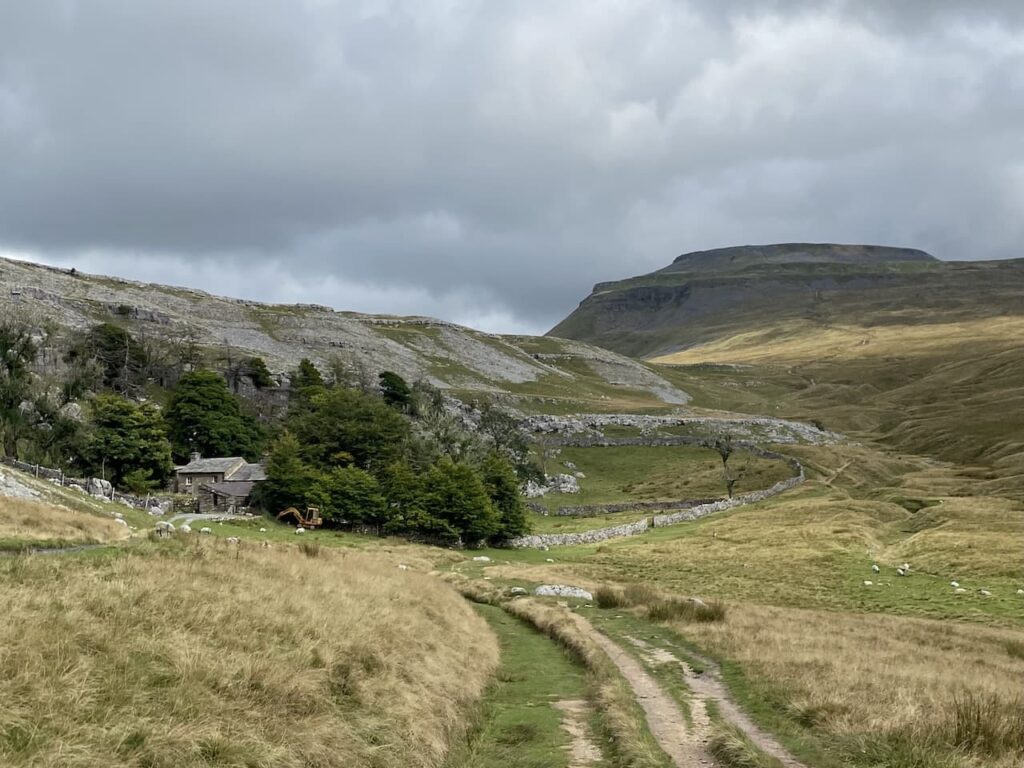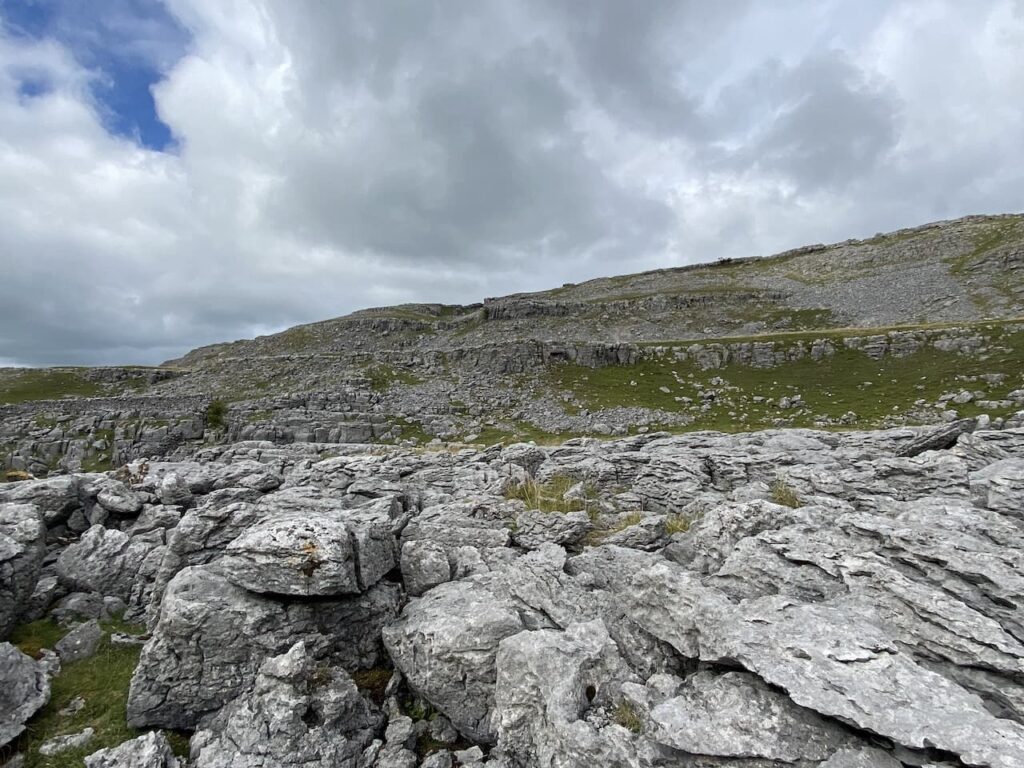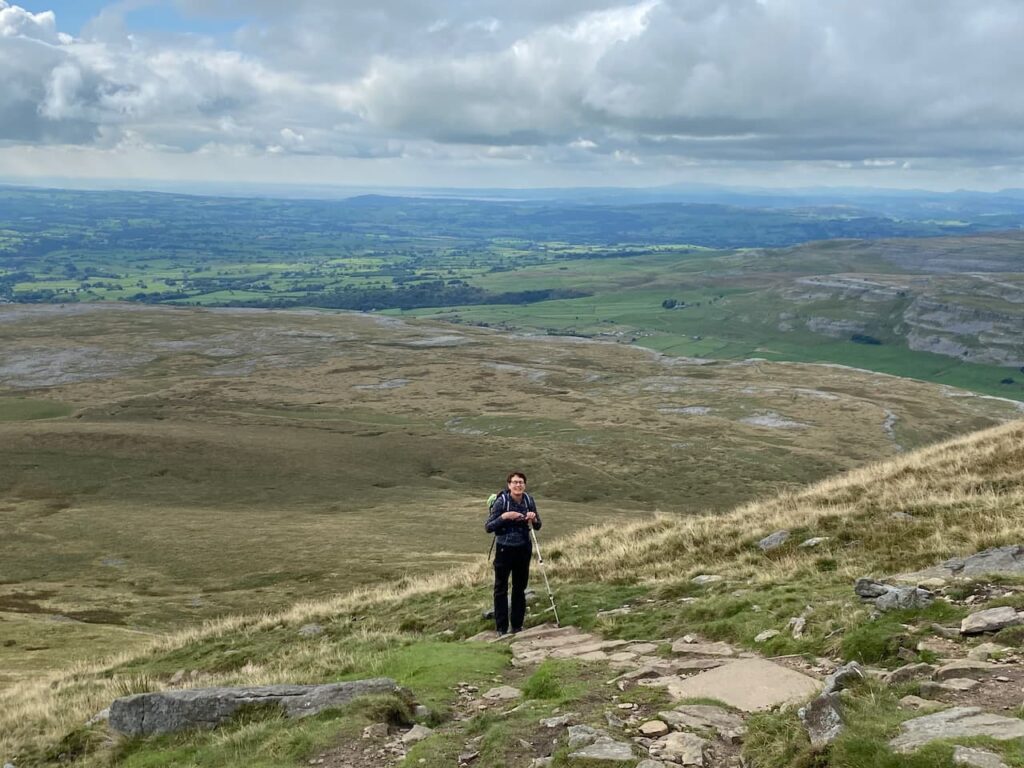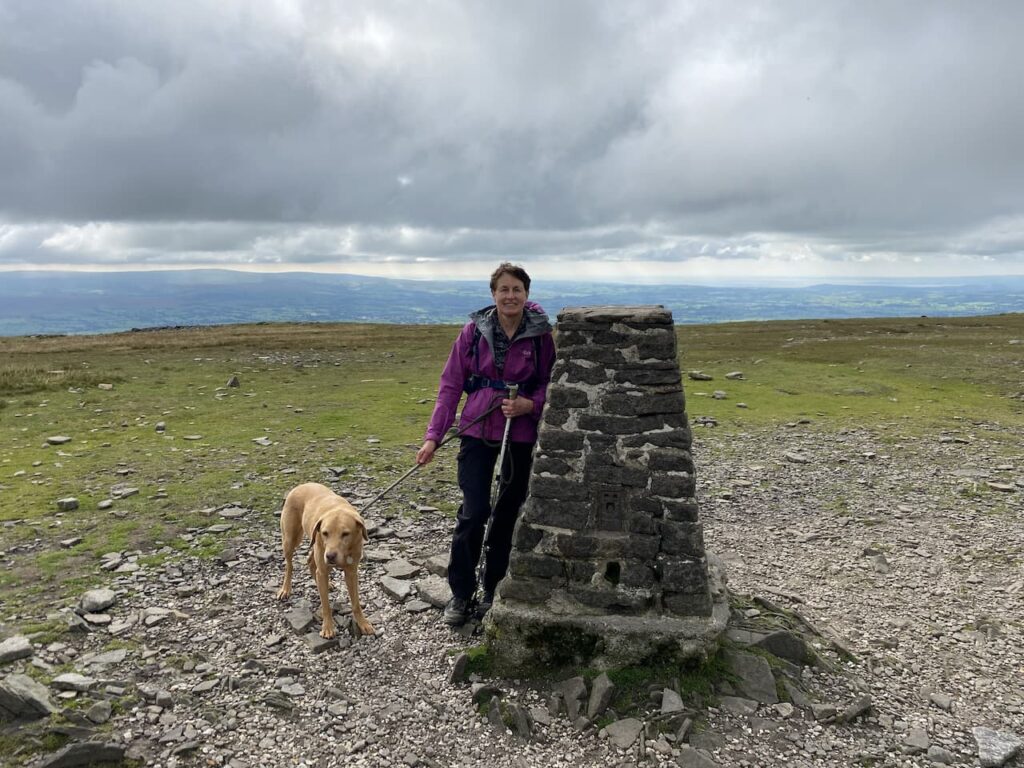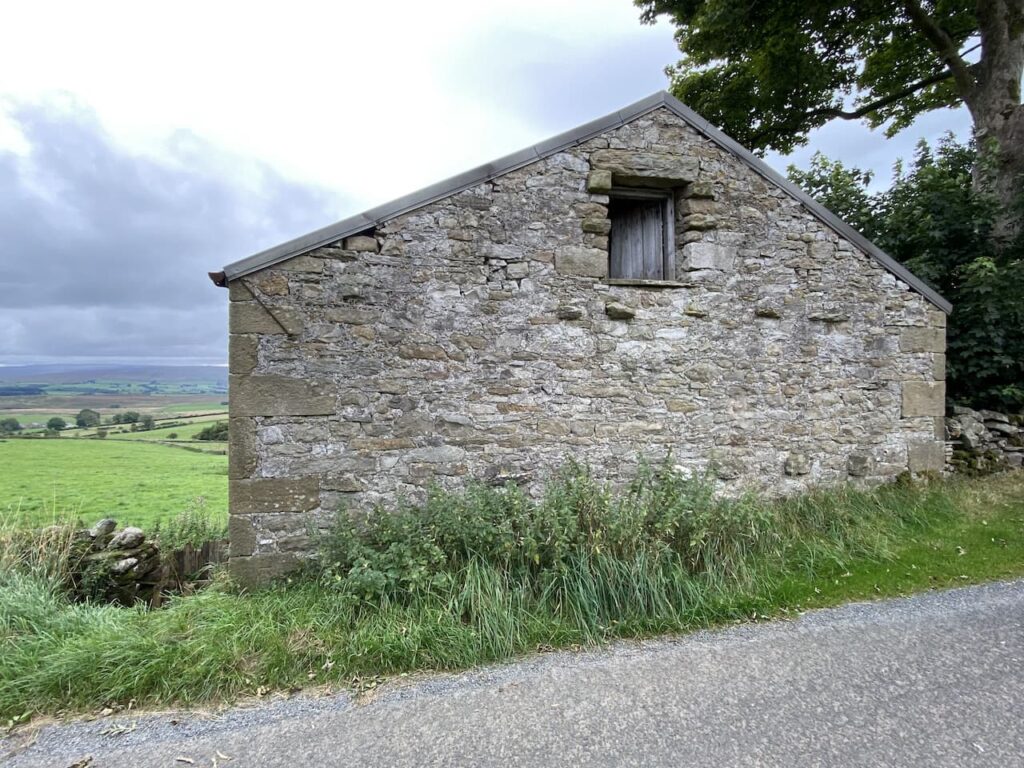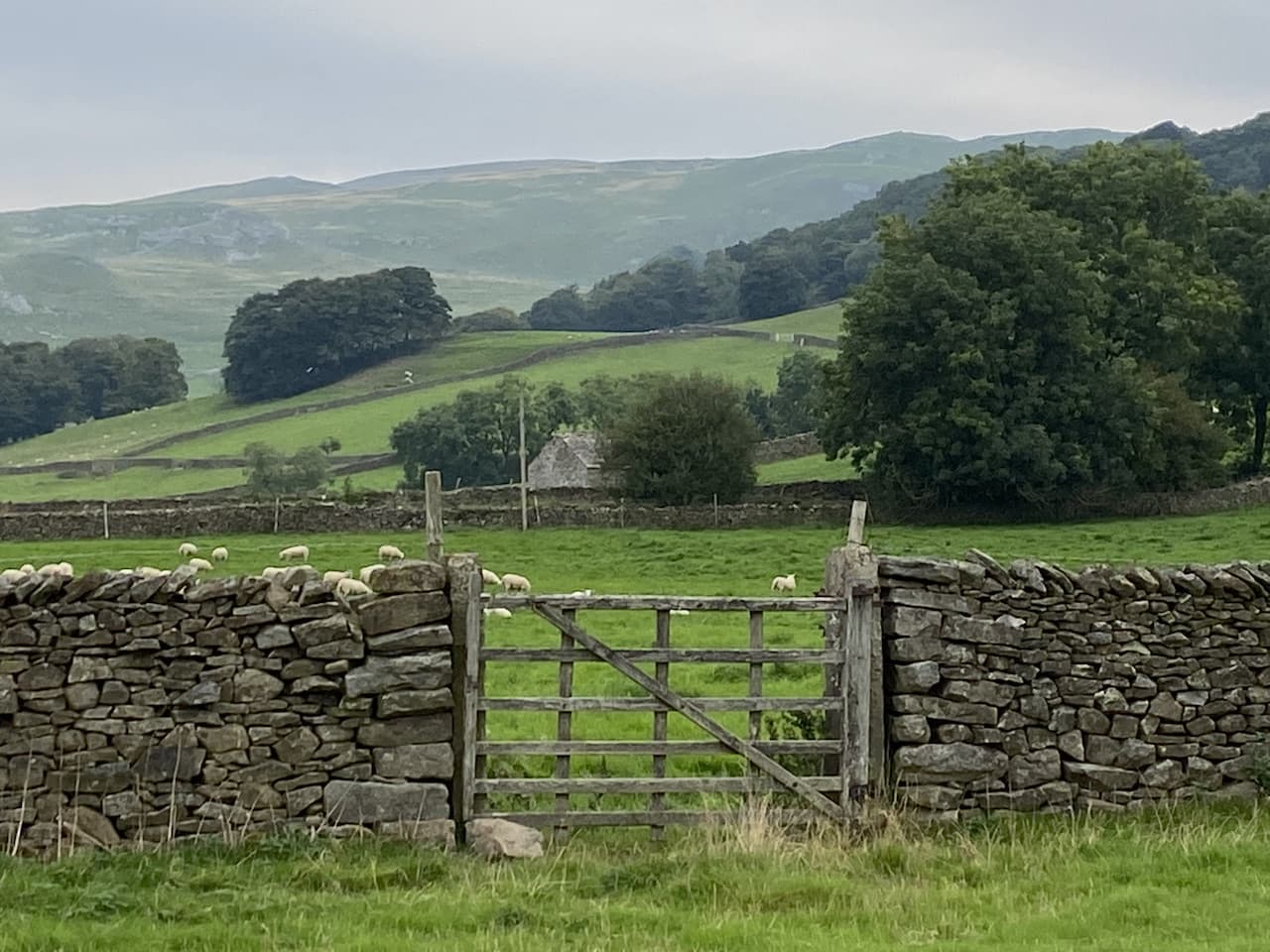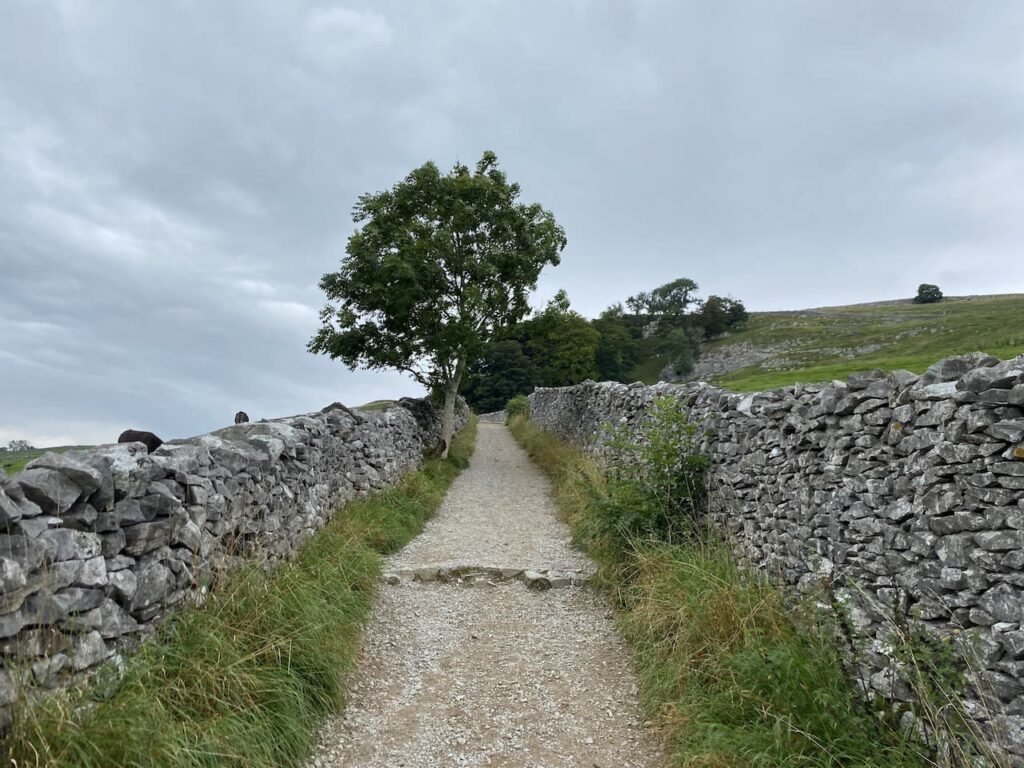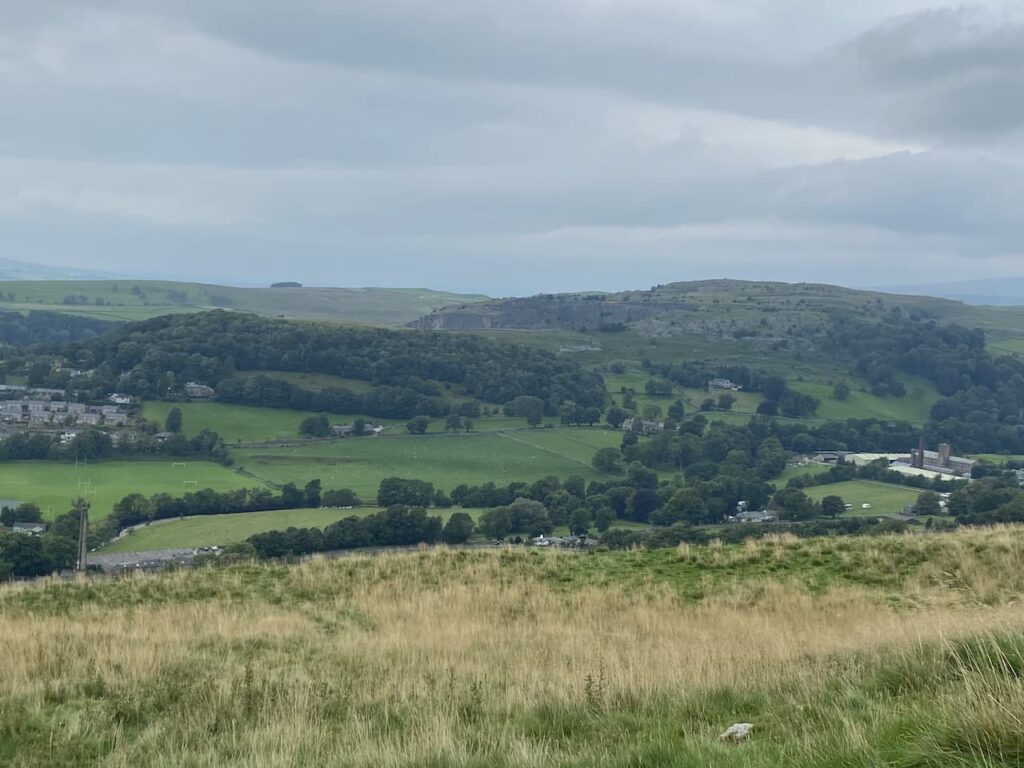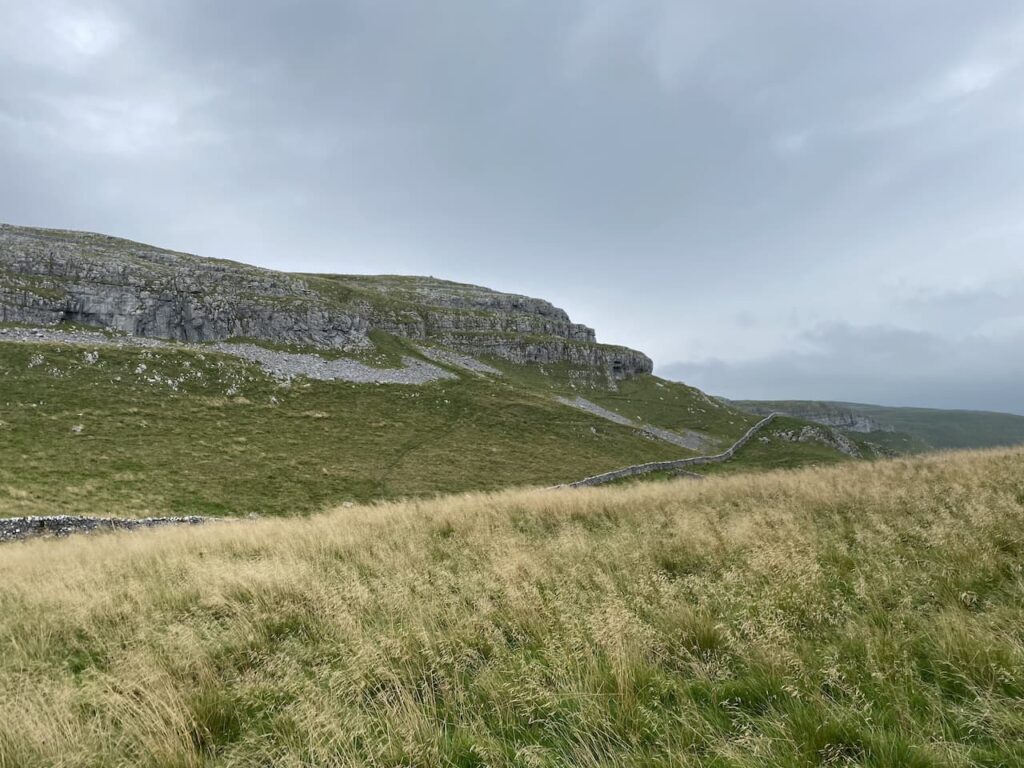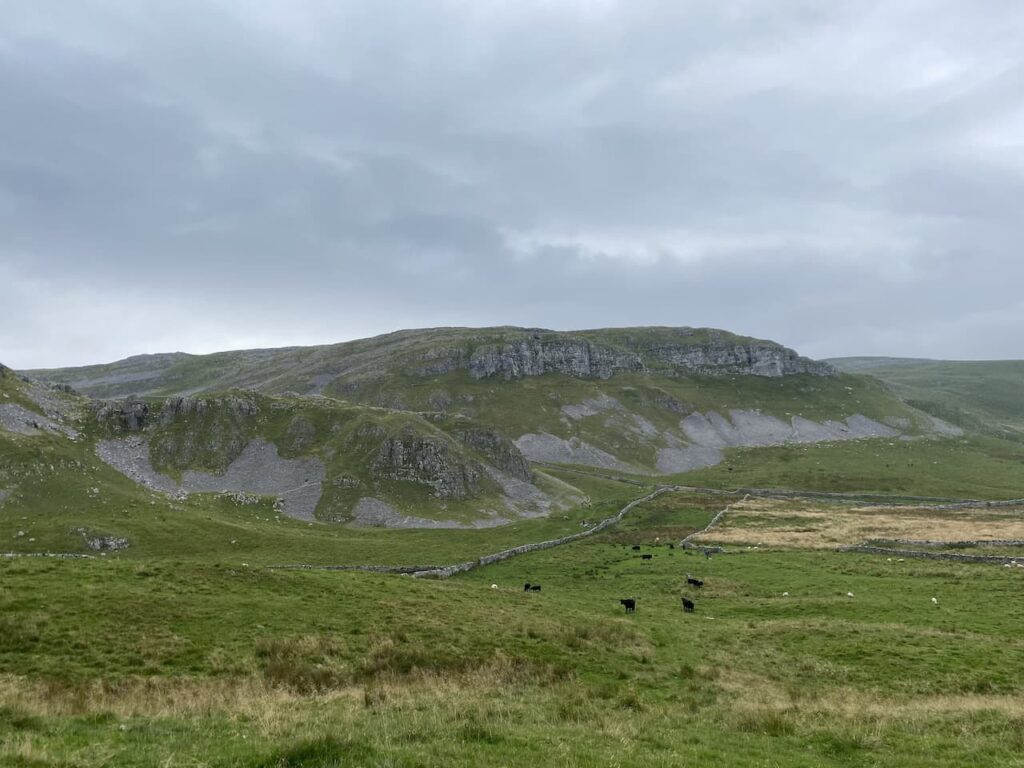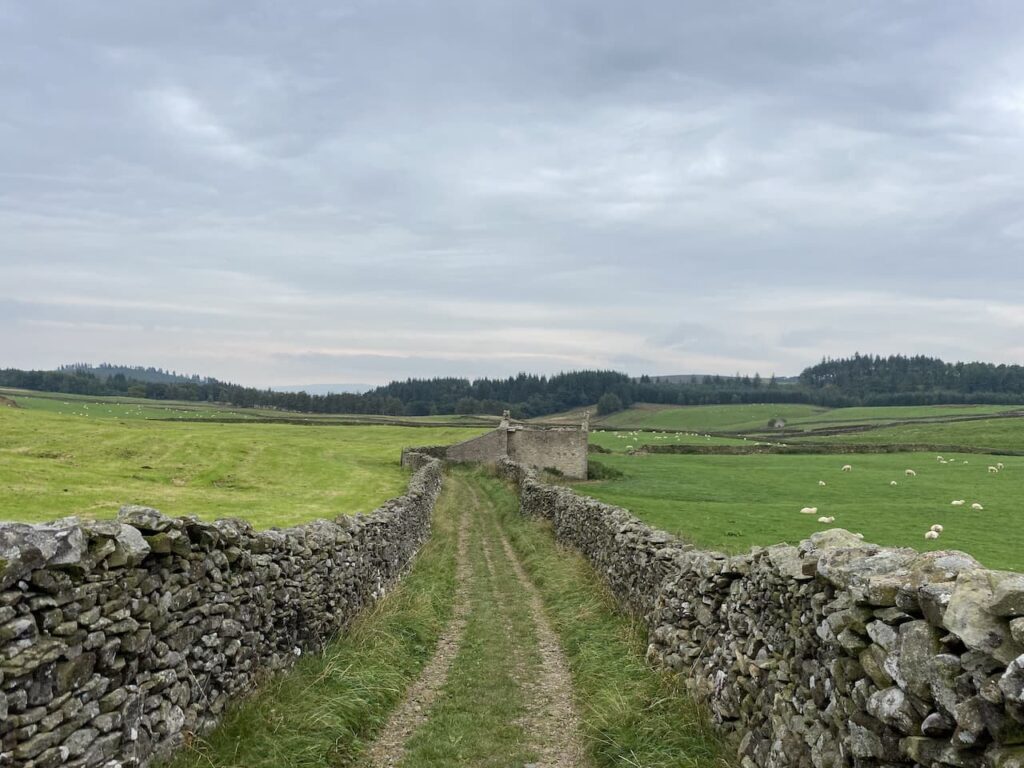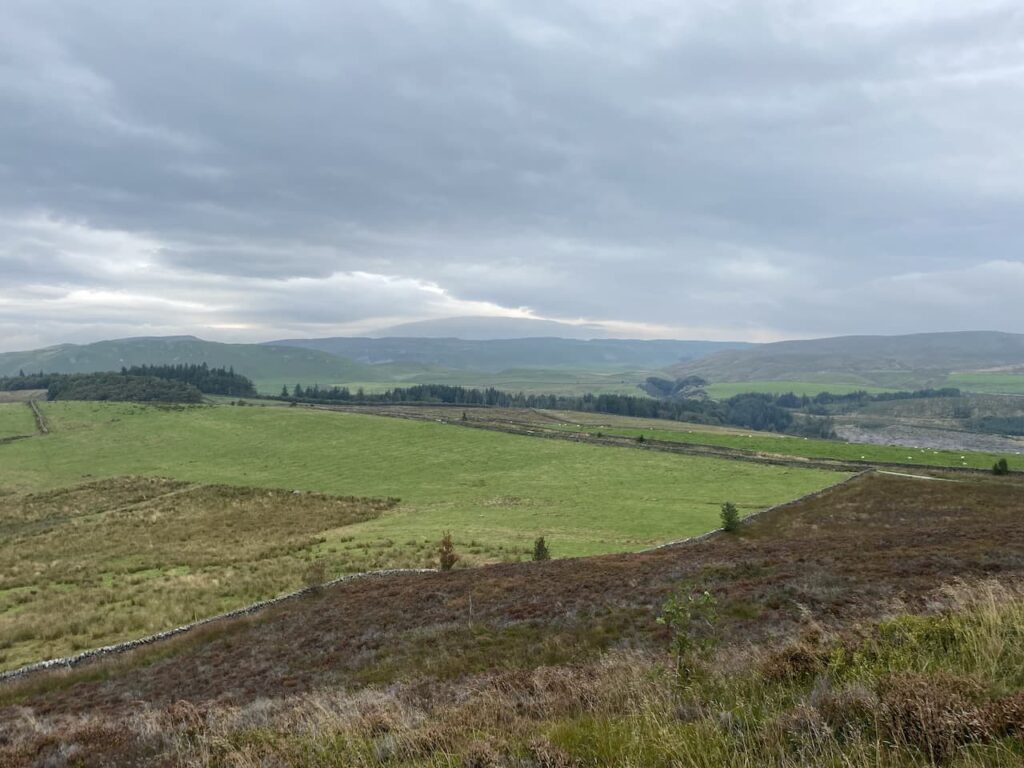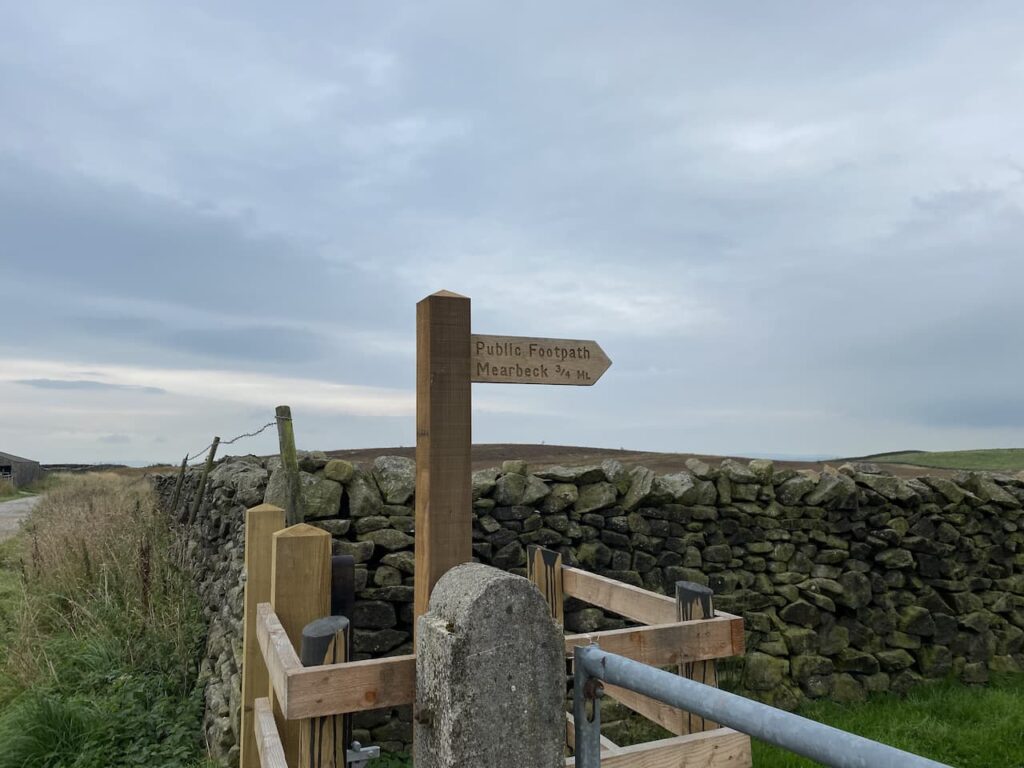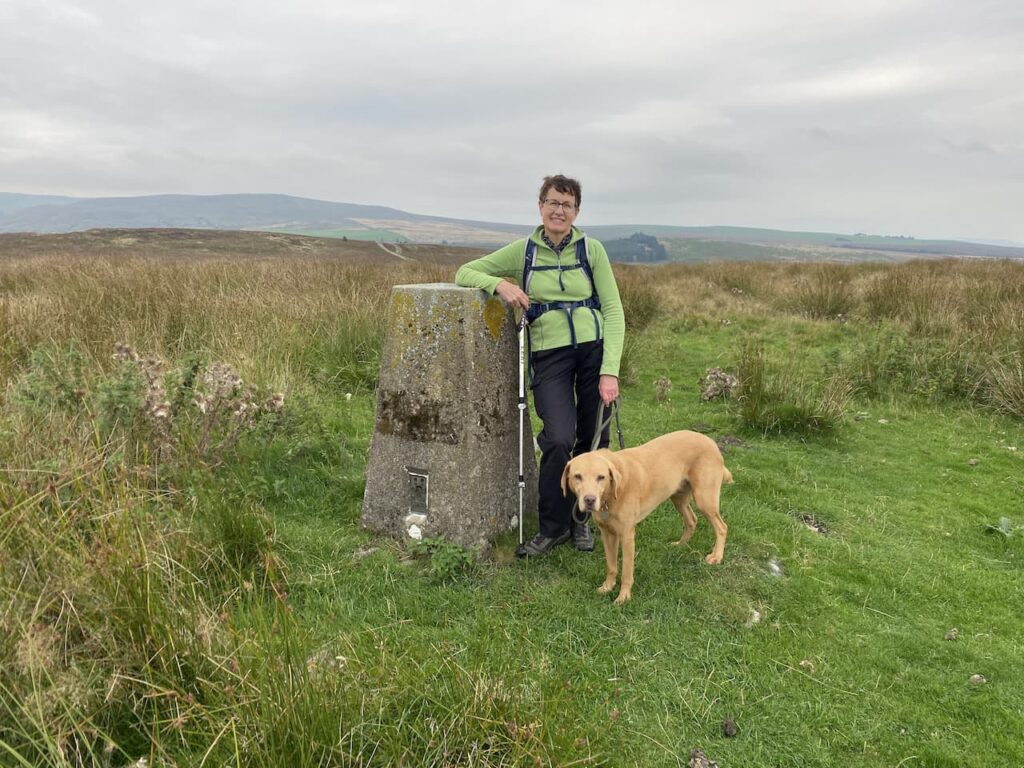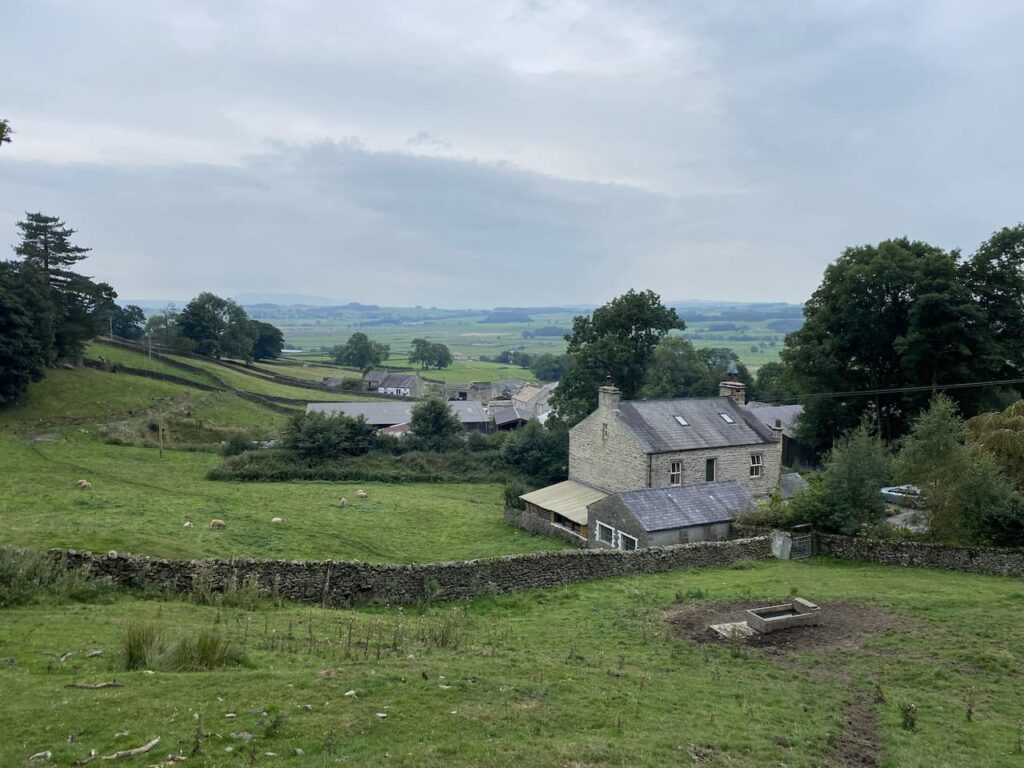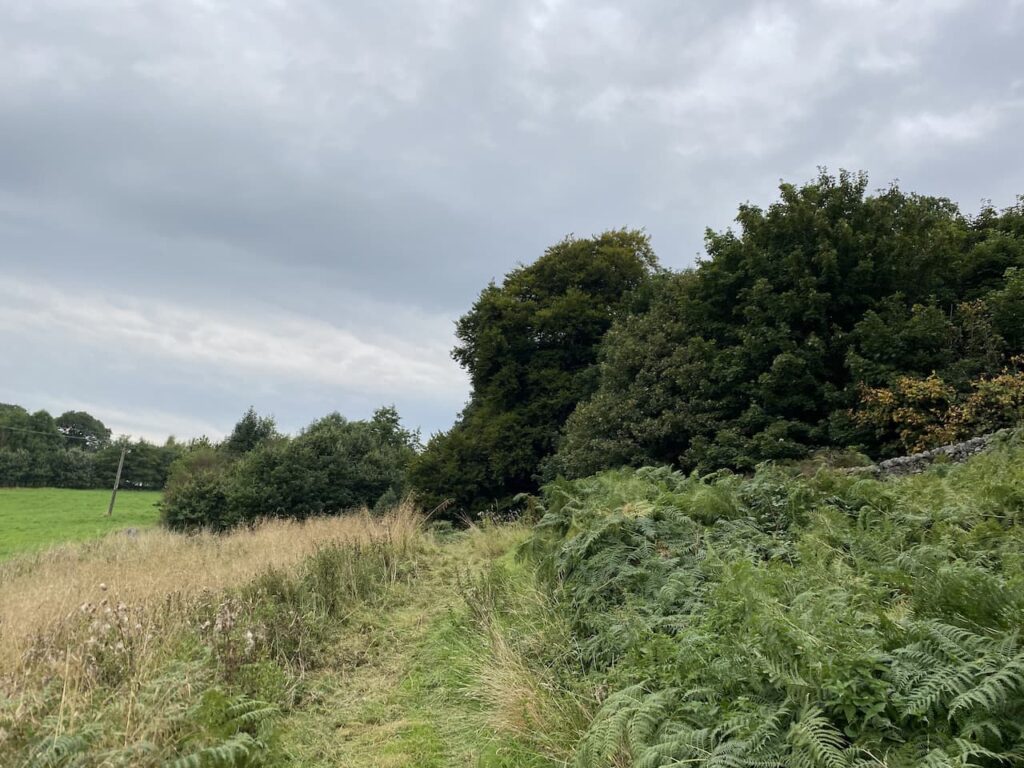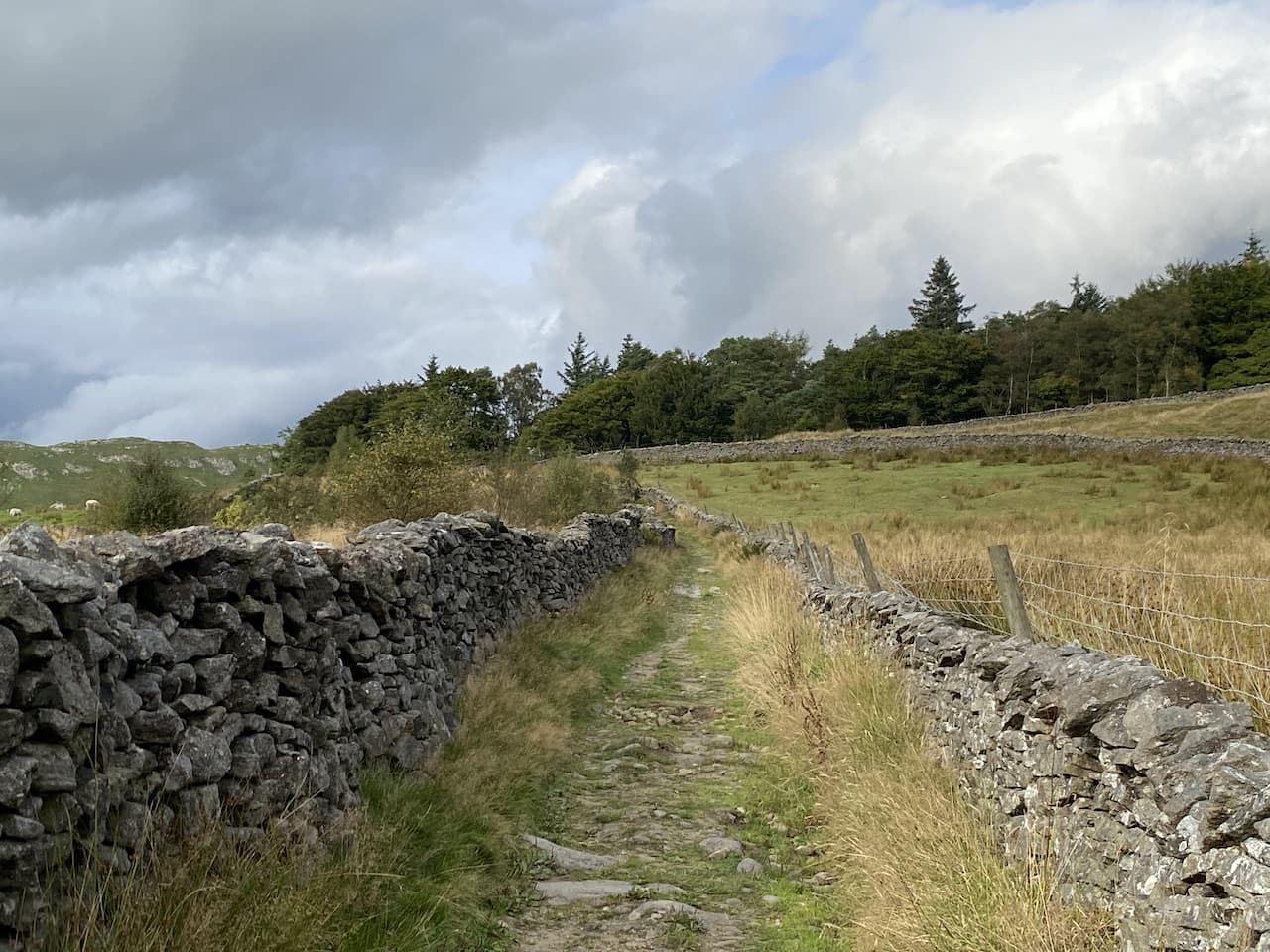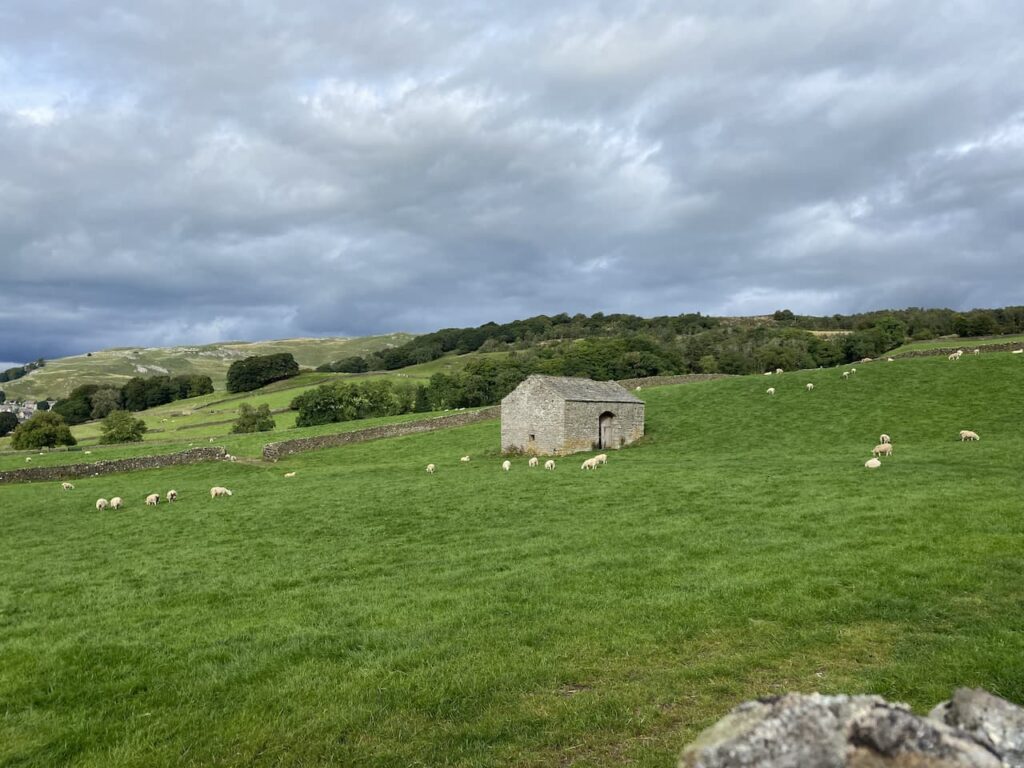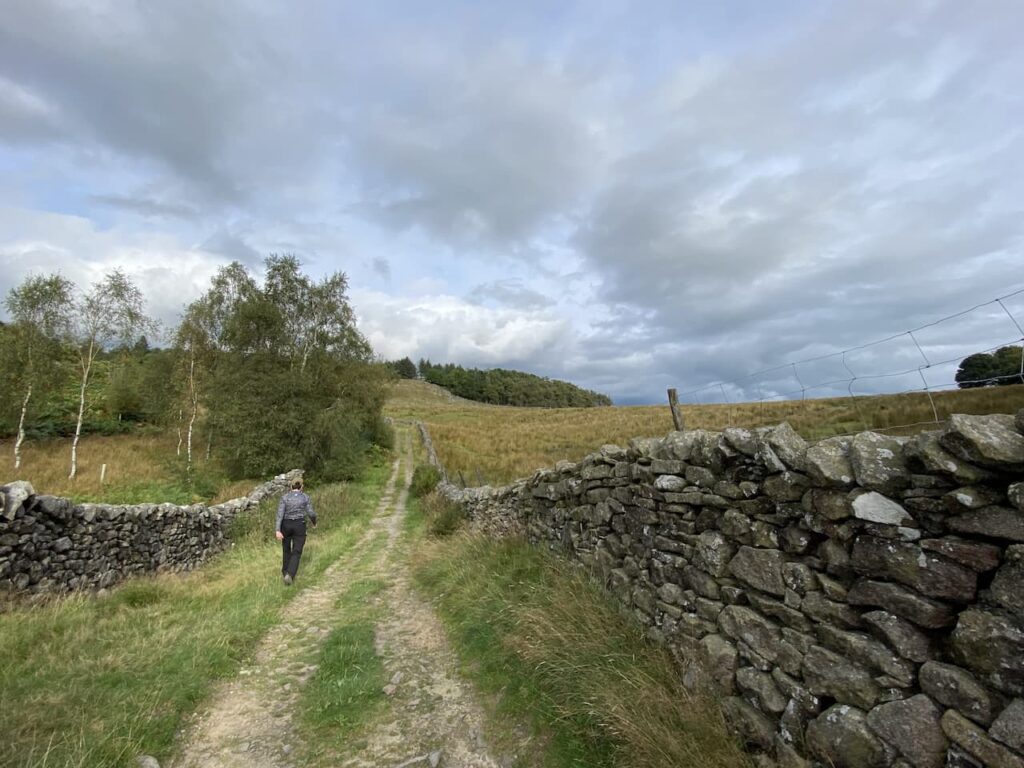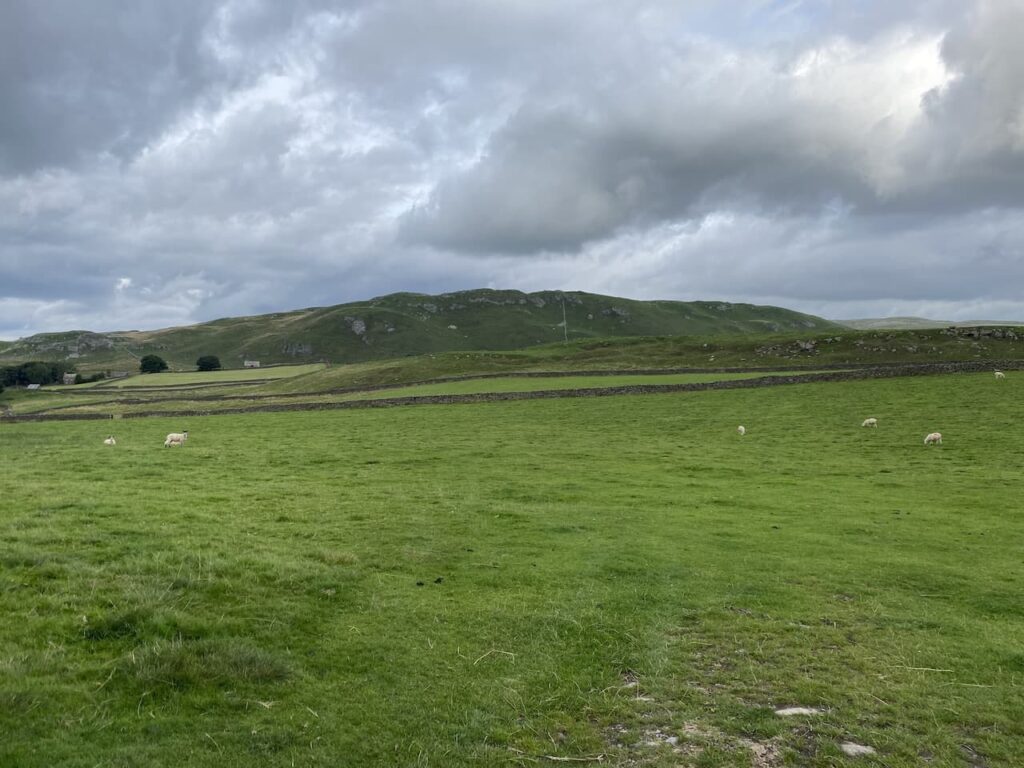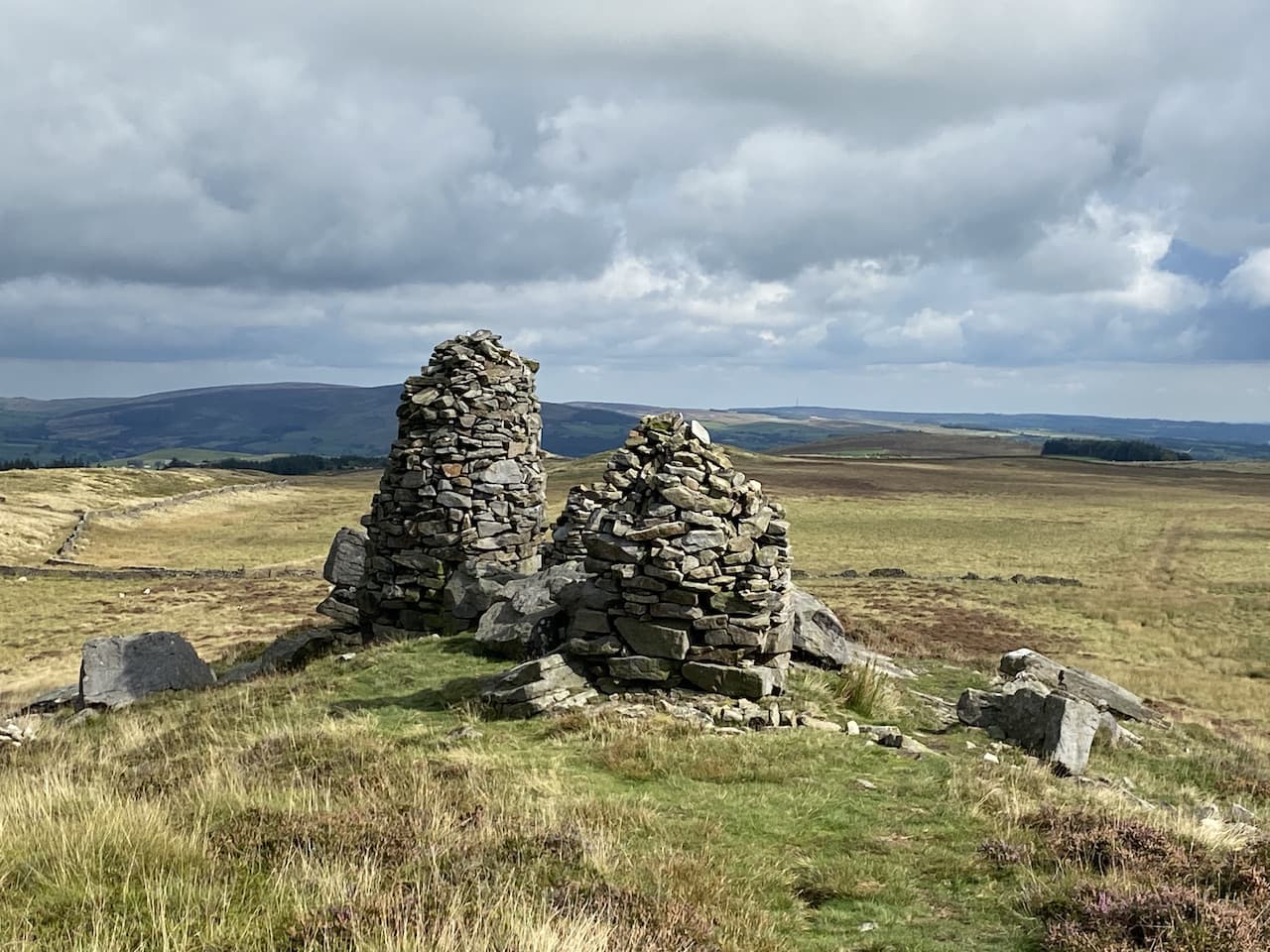Yesterday I completed another circuit of the Yorkshire Three Peaks. This time it was with my walking buddy Mandy. It is a while since I did the walk with someone else and we had a good day for it achieving Mandy’s target of completing the walk in less that 10 hours. Normally on the day after this challenge I seek a quiet day’s walking, however, my legs feel good today so I suggest to Lynnie we head off to nearby Gisburn Forest for a wander about.
The starting point for our walk is the pay and display School Lane Car Park, at Stocks Reservoir (BB7 4TS). At the edge of the car park are the remains of the demolished St James’ church built in 1852 and demolished when the reservoir was built in 1932.

We leave the car park and join a path running parallel to the road heading south east towards a causeway crossing the reservoir.

On reaching the causeway we stop to look at the current low water level in the reservoir. Stocks Reservoir opened in 1932 and was created by flooding the Dalehead valley including the hamlet of Stocks-in-Bowland. It took 10 years to construct and had over 500 men working on it. These were housed in a temporary village called Hollis which was situated near the dam.
The reservoir was formed by damming the River Hodder and covered 344 acres. The last time we were here the water level was high but today, after a dry spell, it is very low.

After crossing the causeway we take a path on the right through woodland and cross a stream.

When the path sweeps to the right to head towards the dam we join a minor road, Hole House Lane and continue along this to St James’ Church. This church was built when the reservoir was constructed using material from the old church that was demolished. Apparently the burials in the churchyard were relocated from the old church and placed here.

We take a look around the church and then continue along the road as it sweeps around the wall of the churchyard. A few hundred yards further on we turn left on a path into Gisburn Forest.

We follow the path to a junction of tracks and then turn right heading towards the main entrance driveway to the Forest Hub.

On reaching the driveway we turn left towards the Gisburn Forest Hub where there is a car park with cafe and toilets. Our route passes the car park and continues on past the former Stephen Park Farmhouse. Stephen Park was the name given to the deer park that was created in the 16th century by the Homerton family. The farmhouse is said to date from around 1662.

Gisburn Forest is the largest forest in Lancashire, we have just crossed the border here from North Yorkshire, and it covers around 3,000 acres of land. Throughout the woodland is a network of forestry tracks now also used as cycle ways and walking routes.

At a fork in the track we keep right and follow this route as it sweeps around above Hesbert Hall Syke. We stay with this track keeping in a north easterly direction until we reach the edge of the forest. Here at a junction of footpaths we go left, still on a forestry track and head towards a disused quarry at Black Hill.

Soon after the quarry we fork right and keep on the track to reach a footpath on the edge of Hesbert Hall Heights. It is noticeable that the mountain bike tracks are well marked but footpath signs are absent. This path follows the line of a wall as we head north between plantations.

The path leads to an area of rough pasture on Holden Moor with Whelp Stone Crag in front of us.

We stay close to the wall and pick a route through the marshy moor land and then make the short stiff ascent to reach the Ordnance Survey Trig Pillar on Whelp Stone Crag. This is the 272nd I have bagged.

There is a stiff breeze on the summit so after taking in the views we make our way back down the hill and walk back across the moor to join a footpath on the right which leads into the trees through Bottom Heights. This is another path which is not clearly marked, but we wind our way through the trees initially heading west and then south west.

At a junction of paths we go right and head downhill to cross a forestry track and then fork right to pass what appears be a disused farmhouse at Hindley Head.

We follow way-markers around the farmhouse, walking besides a wall, and then on the edge of a plantation turn right and follow the path downhill along the edge of the trees with expansive views to our right.

On reaching a track we turn right and follow this as it swings around to cross Bottoms Beck. At a T junction of tracks we turn left and then after a couple of hundred yards take a footpath on the right which heads steadily uphill through the trees heading east towards a parking area.

At the parking area we join the road and turn left heading down School Lane towards our starting point.

The lane leads us back to the car park just as the light is beginning to fade. The problem with walking in late September is the evenings suddenly start drawing in. Our walk has covered eight and a half miles. I am not a fan of walking in coniferous woodland, but it was compensated by bagging a cracking trig at Whelp Stone Crag.
You can view this 8.5 mile walk on OS Maps and download the GPX File Here
To follow this walk you will need Ordnance Survey Outdoor Leisure Map OL41 – Forest of Bowland & Ribbledale
22nd September 2021
© Two Dogs and an Awning (2021)
All information on this site is provided free of charge and in good faith and no liability is accepted in respect of damage, loss or injury which might result from it. To the best of my knowledge the routes are entirely on public rights of way or within areas that are open for public access.
Walking can be hazardous and is done entirely at your own risk. It is your responsibility to check your route and navigate using a map and compass.
